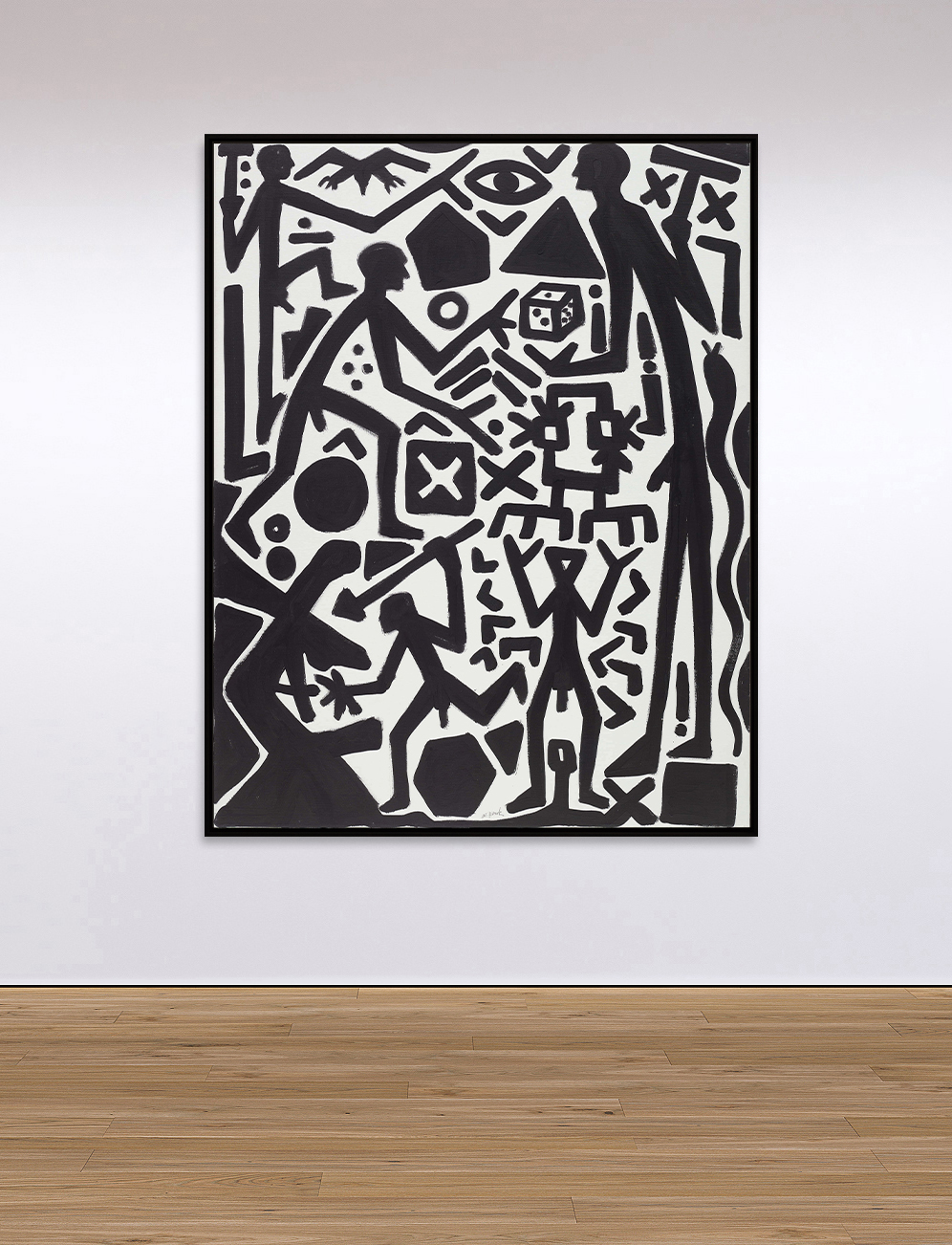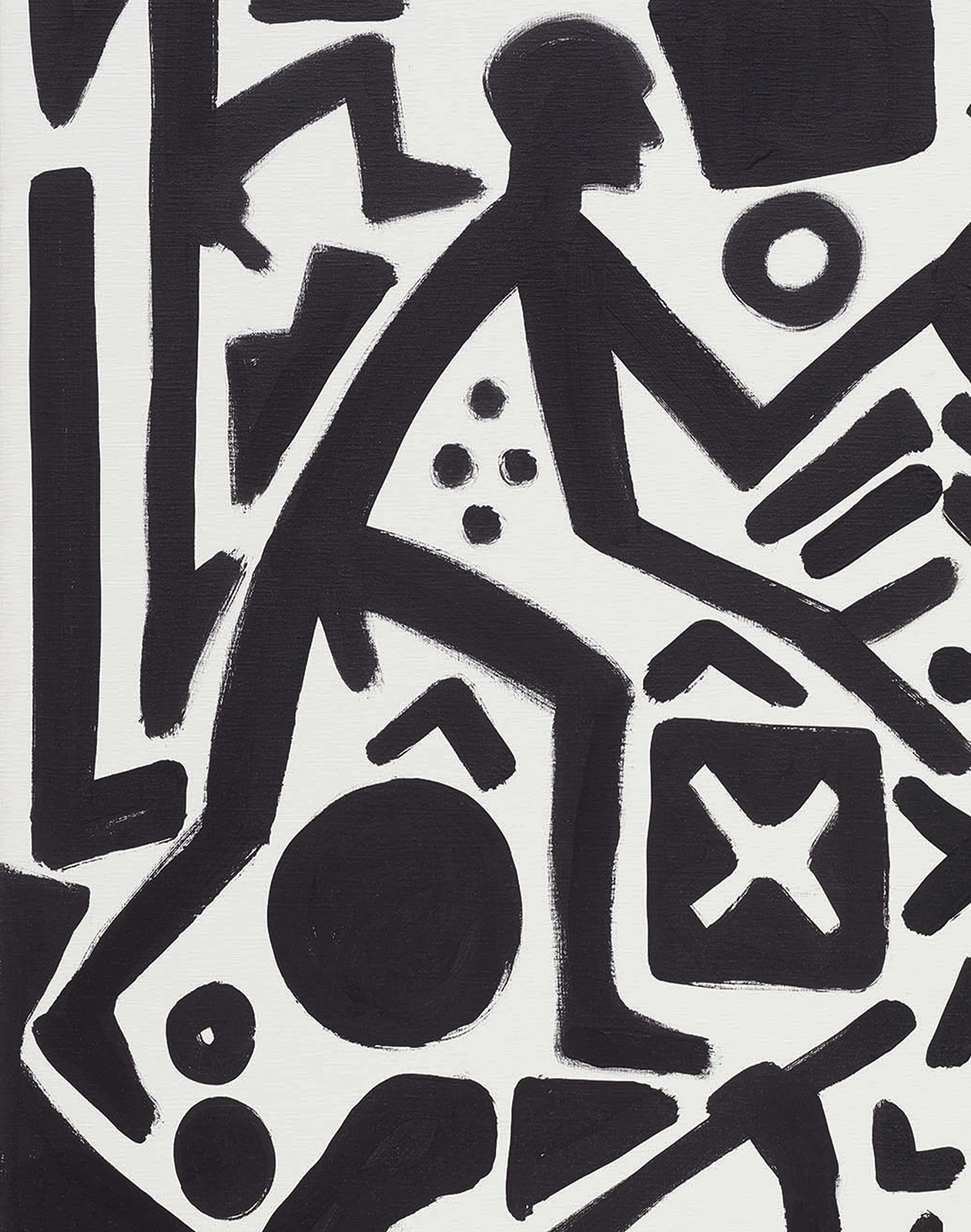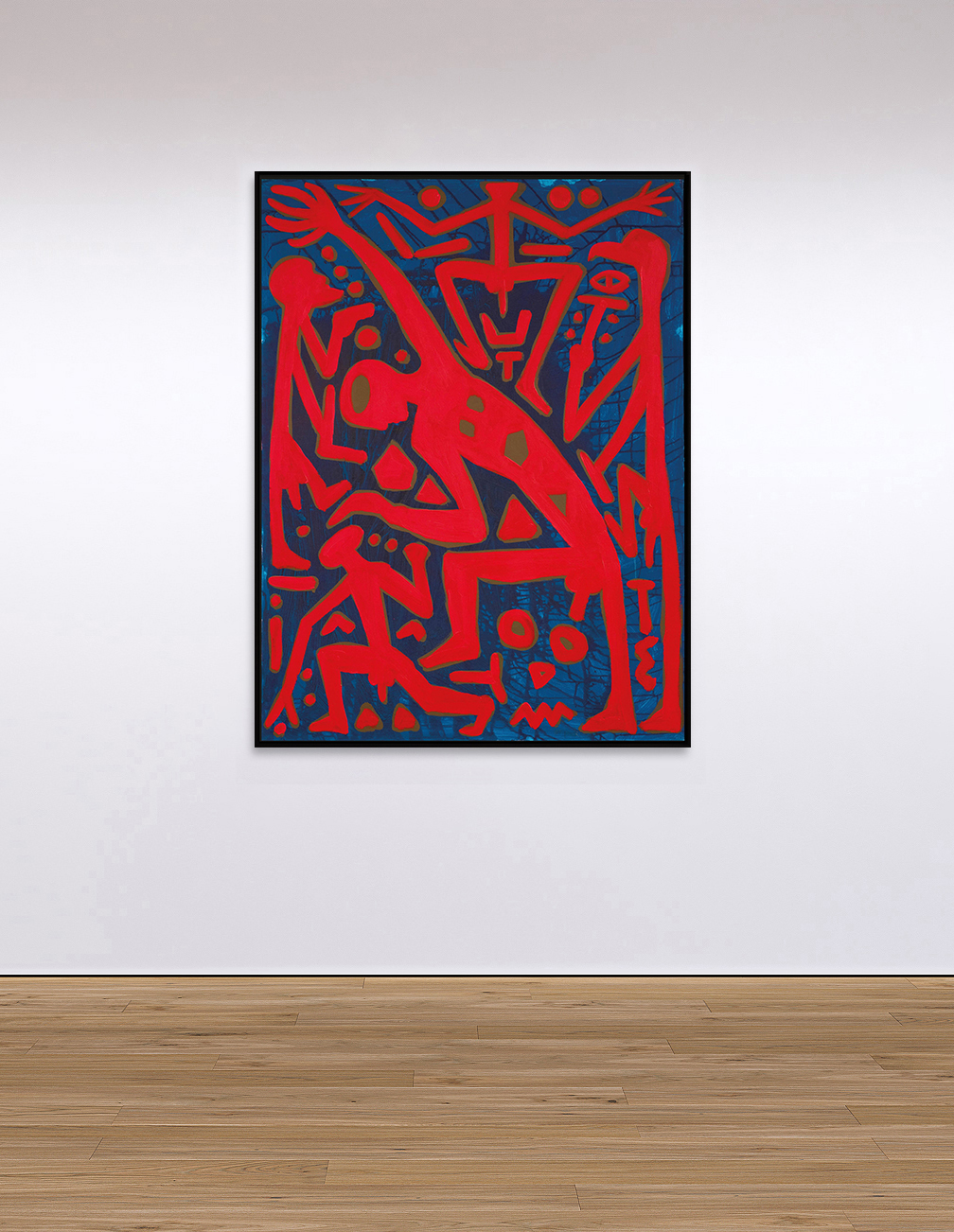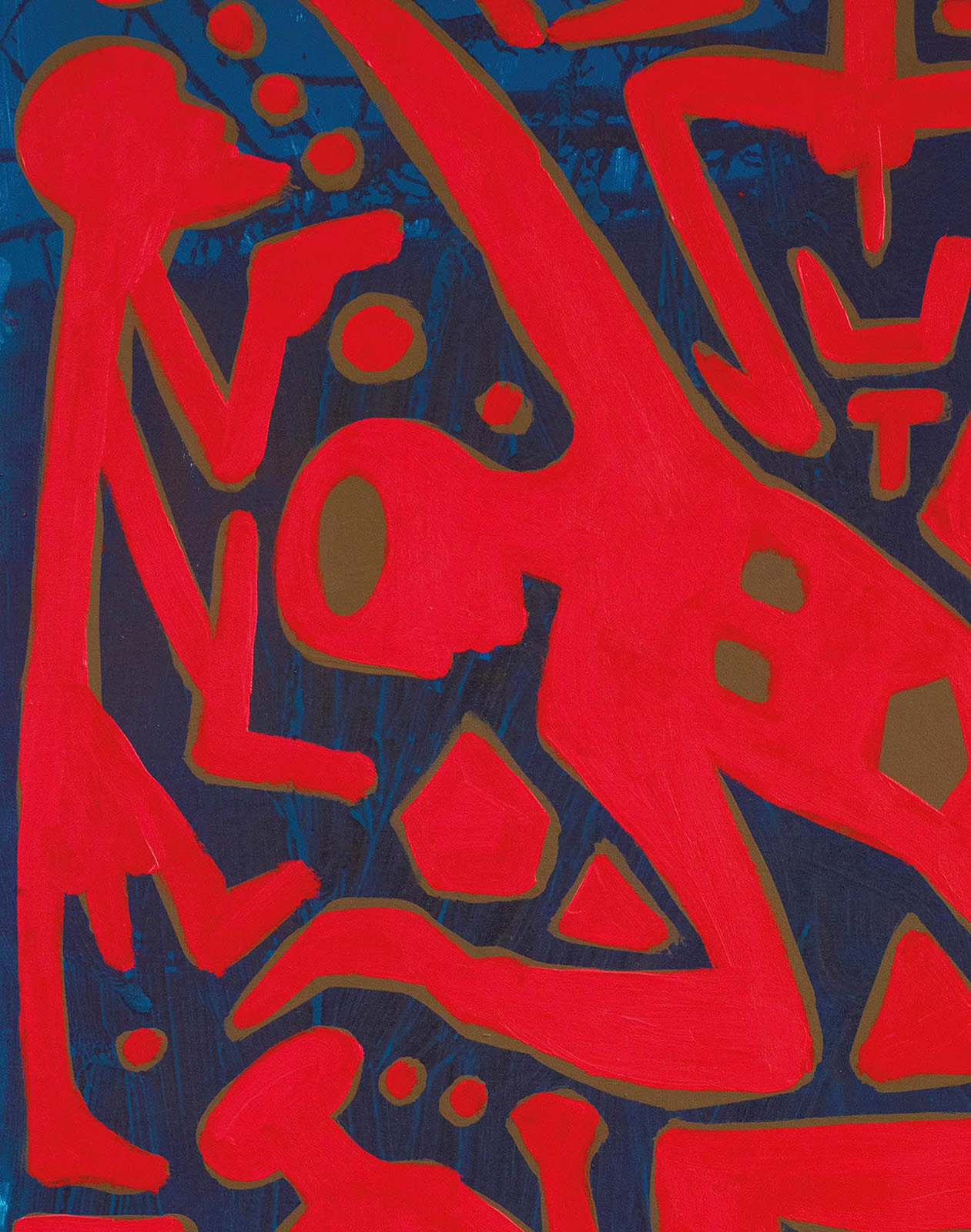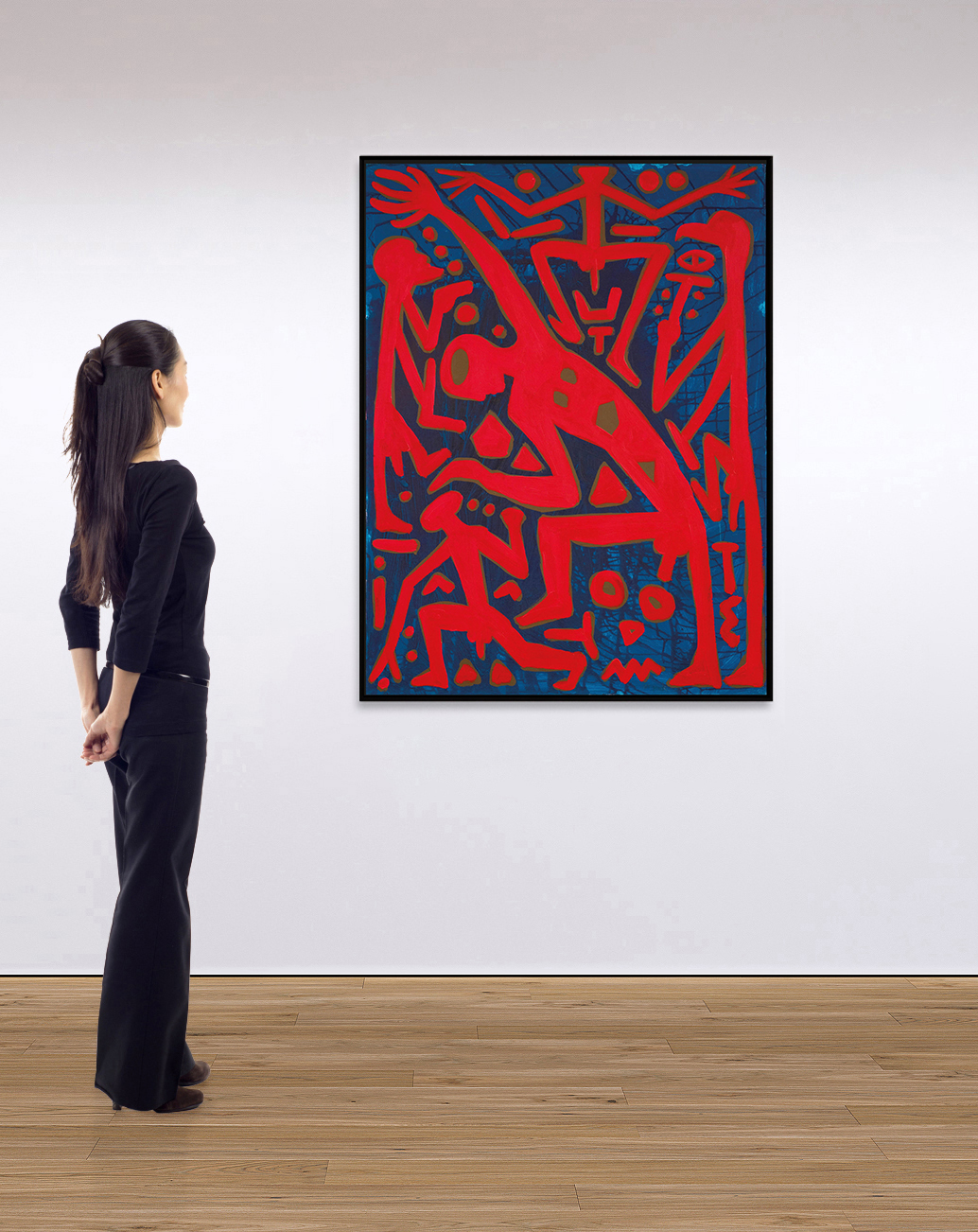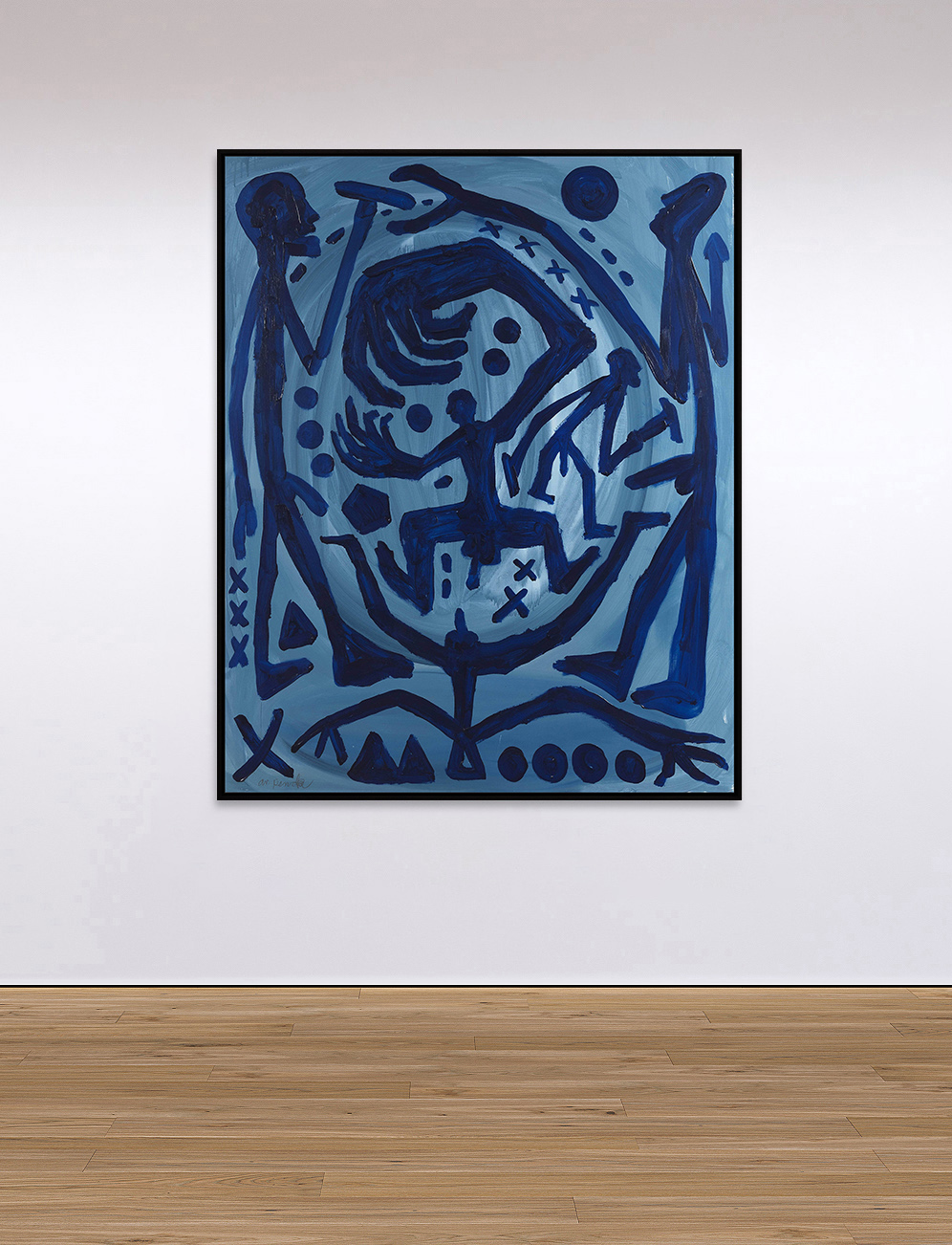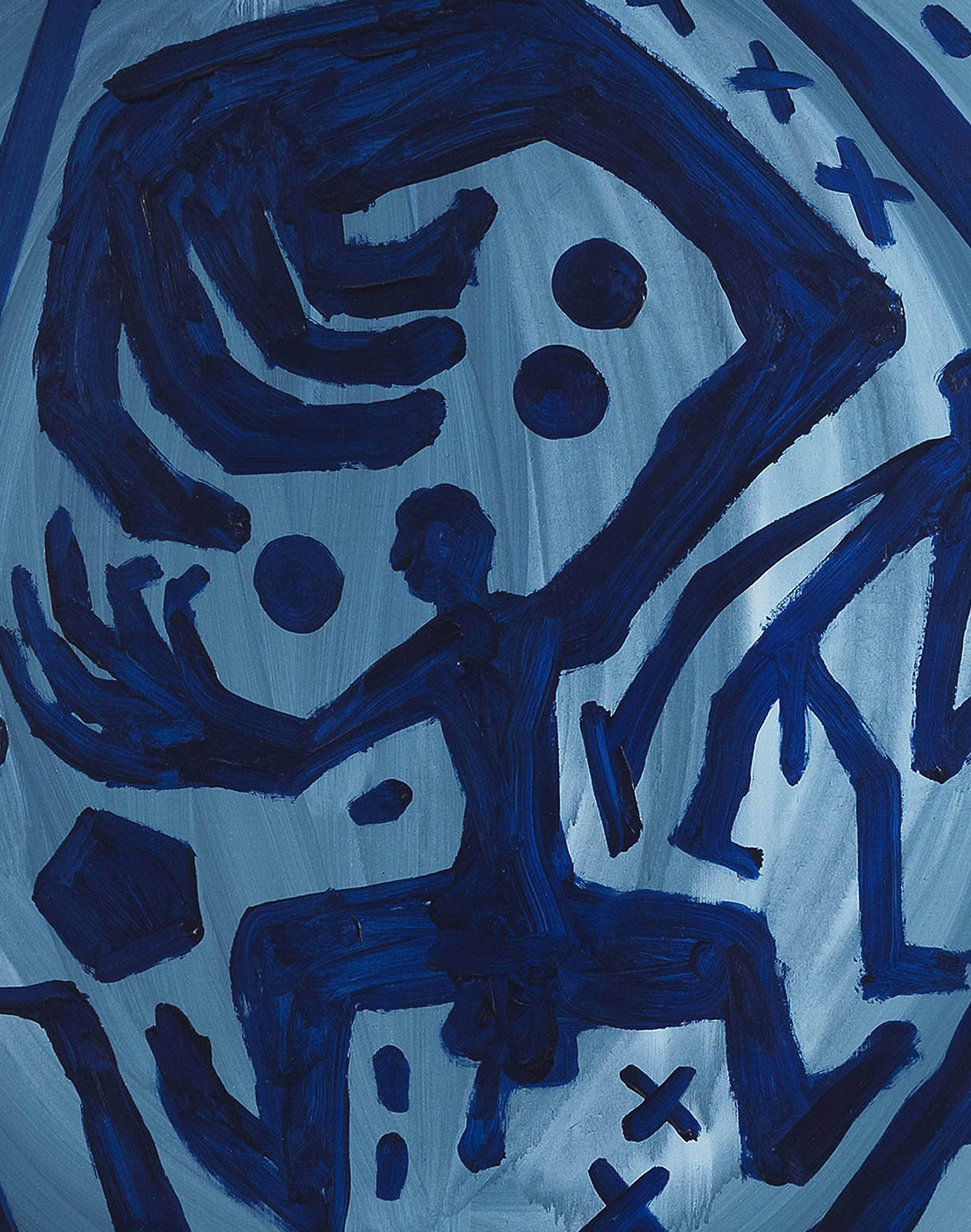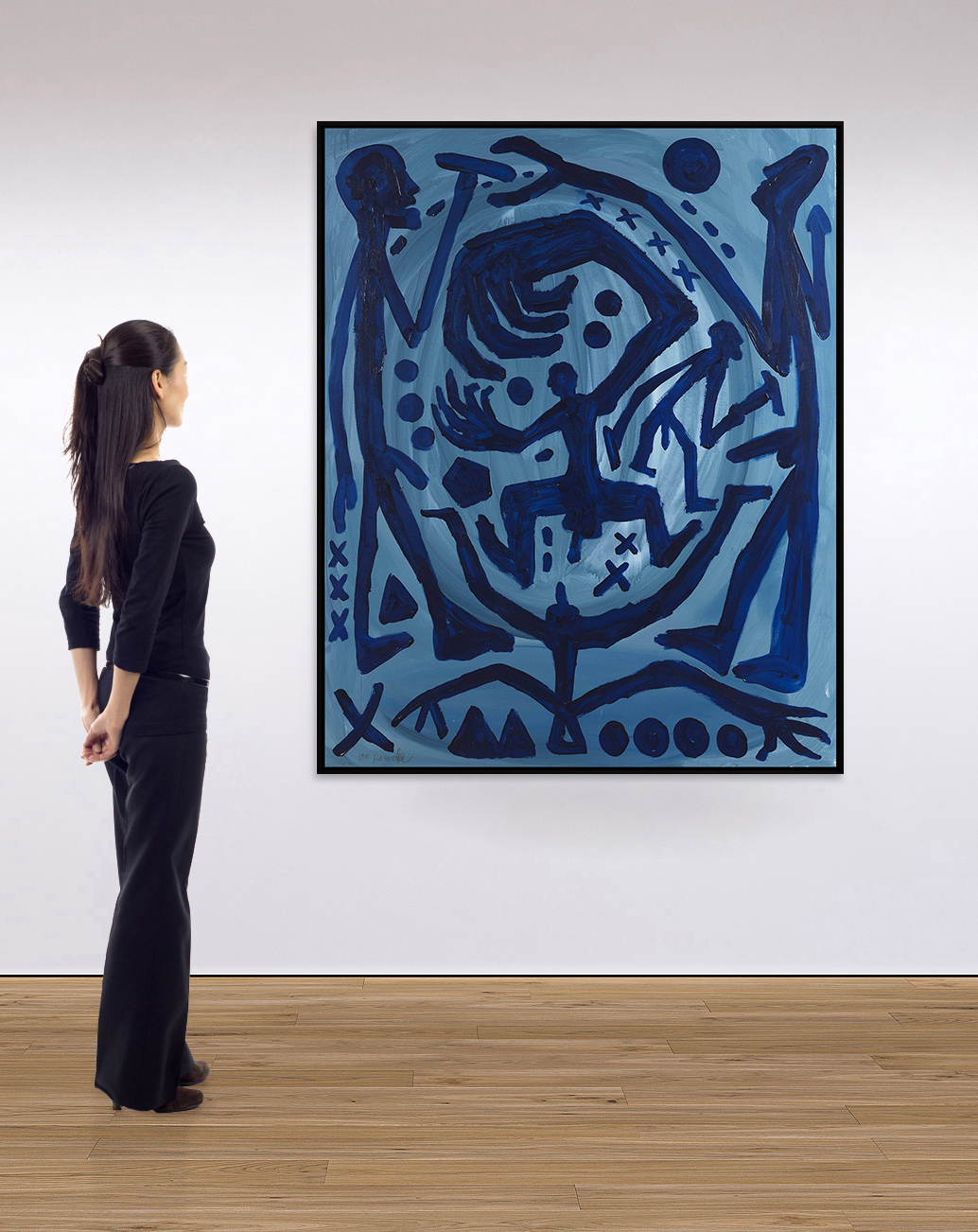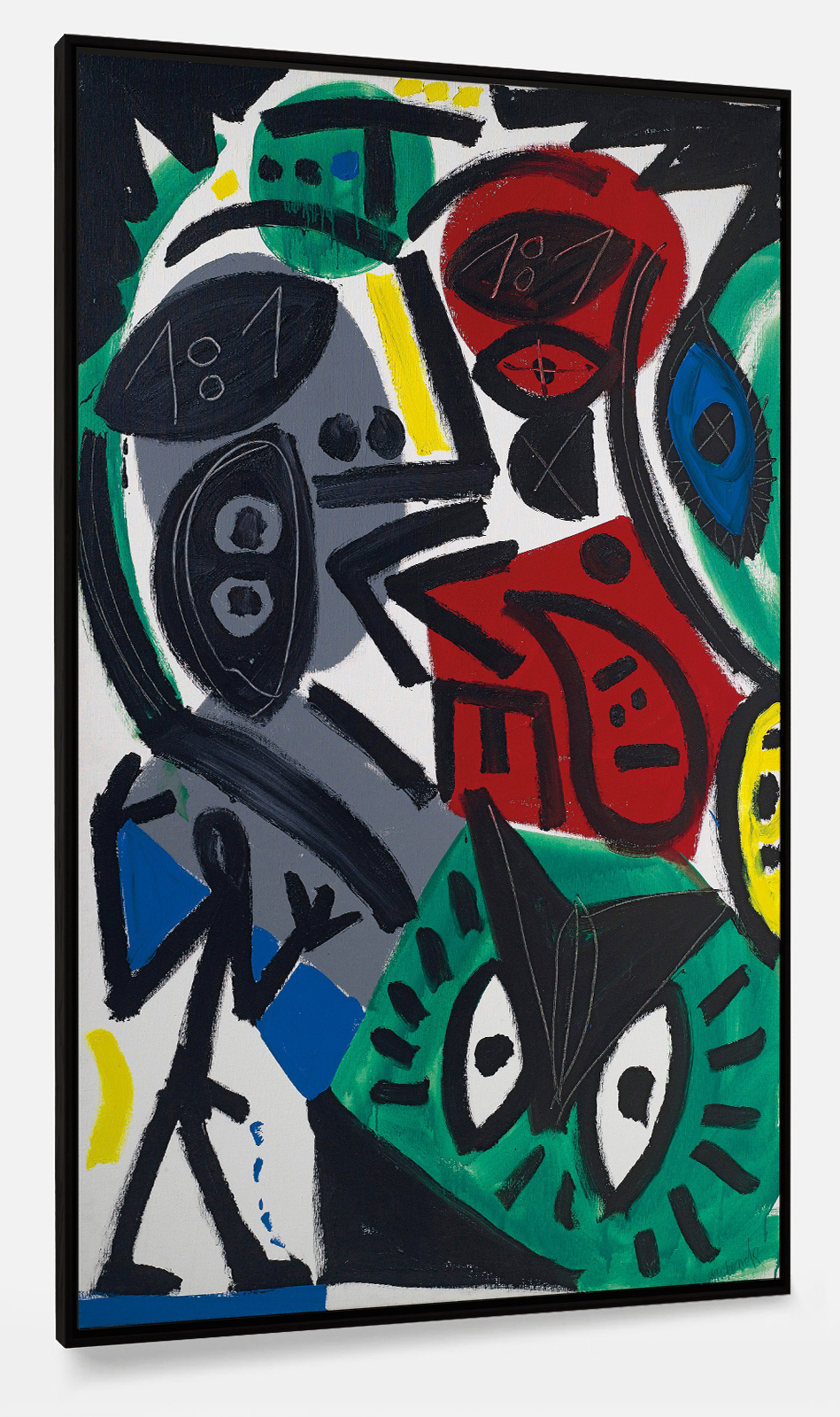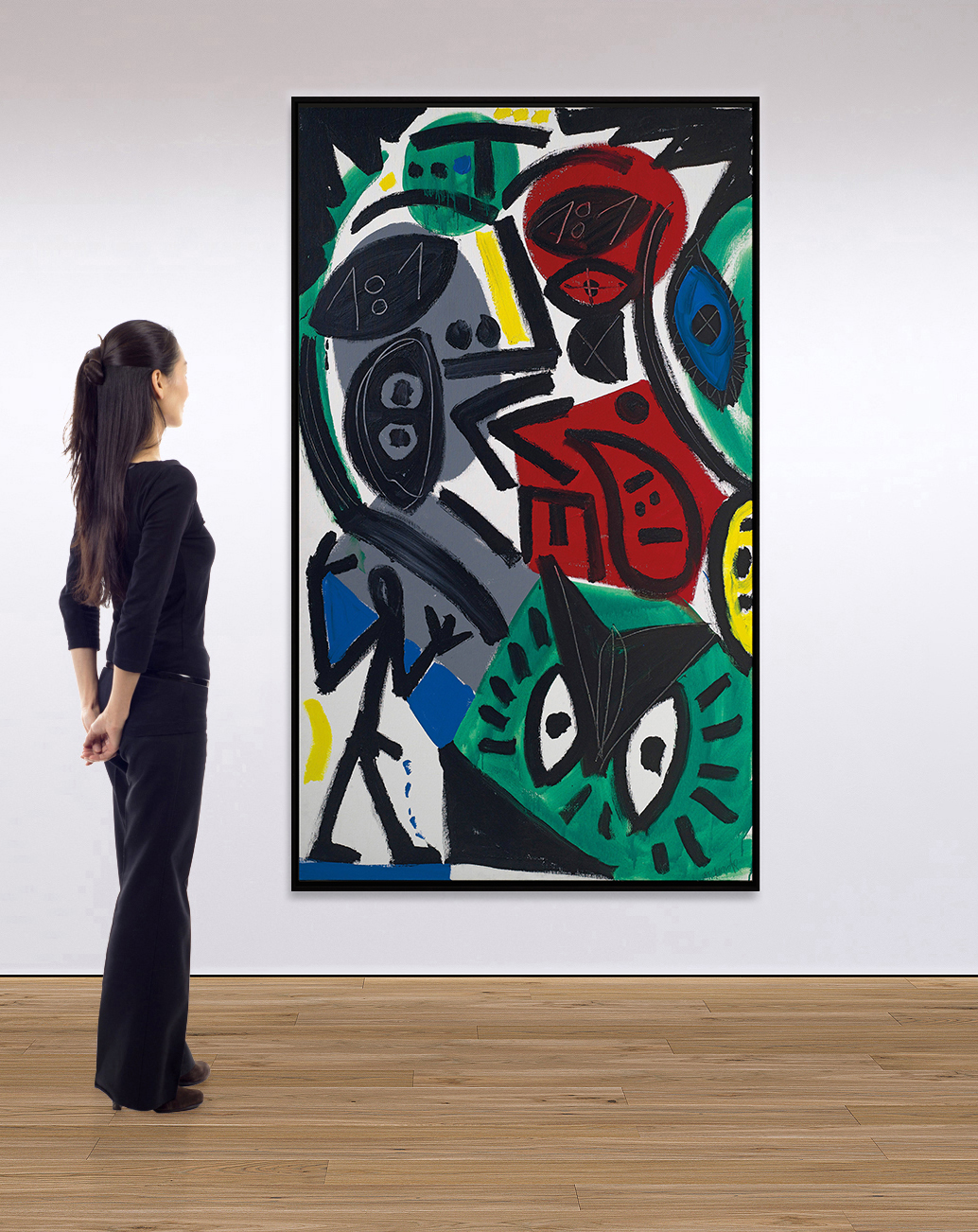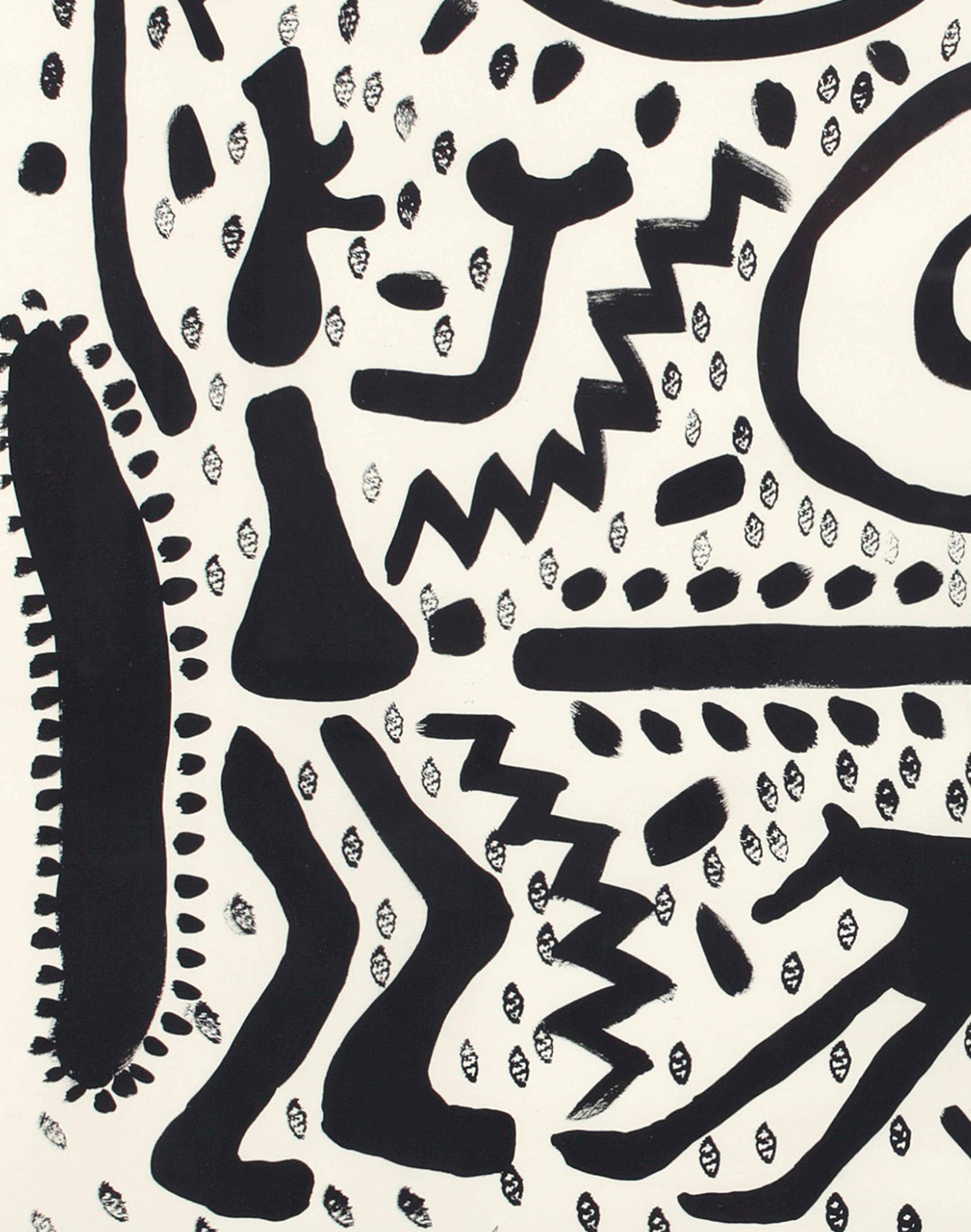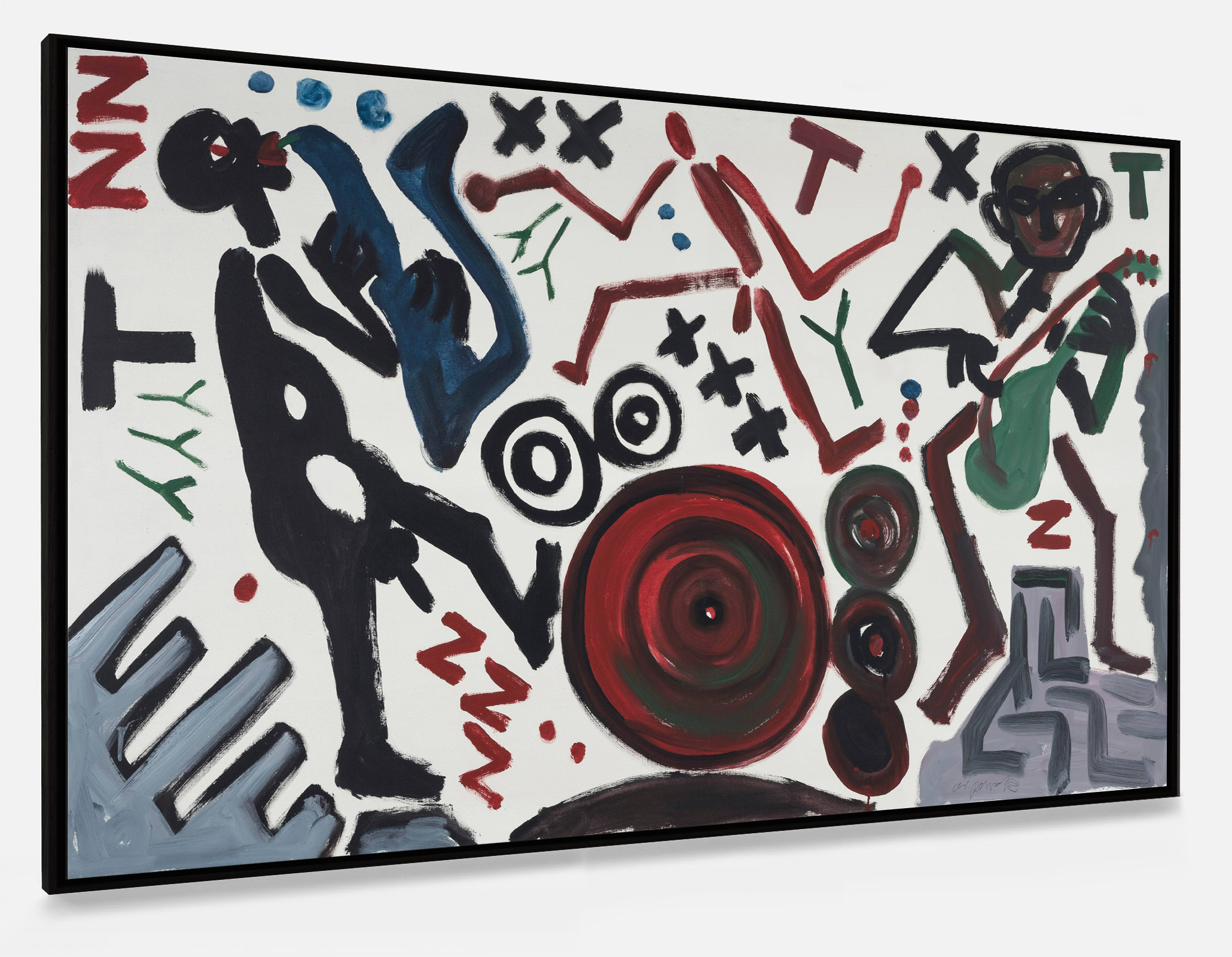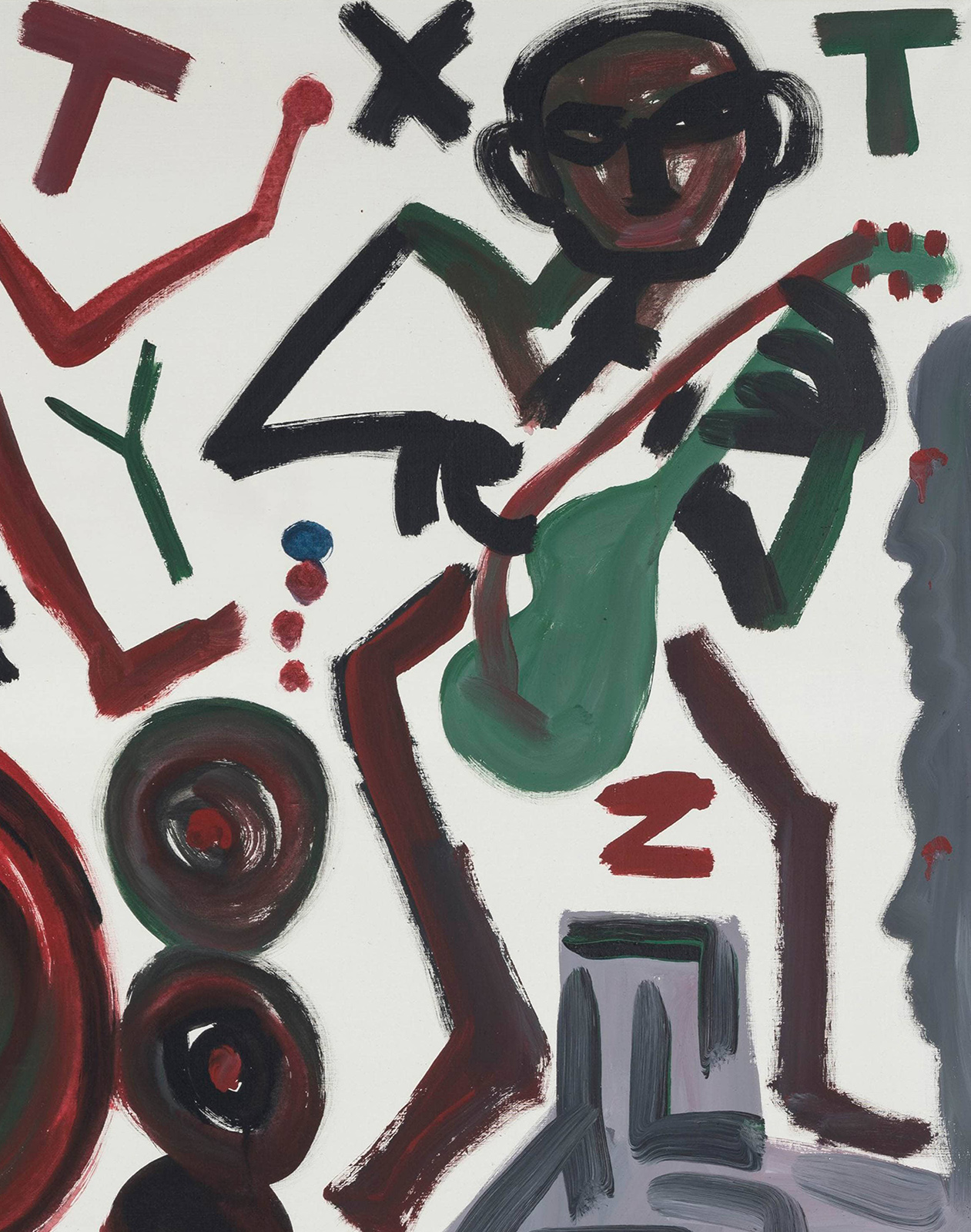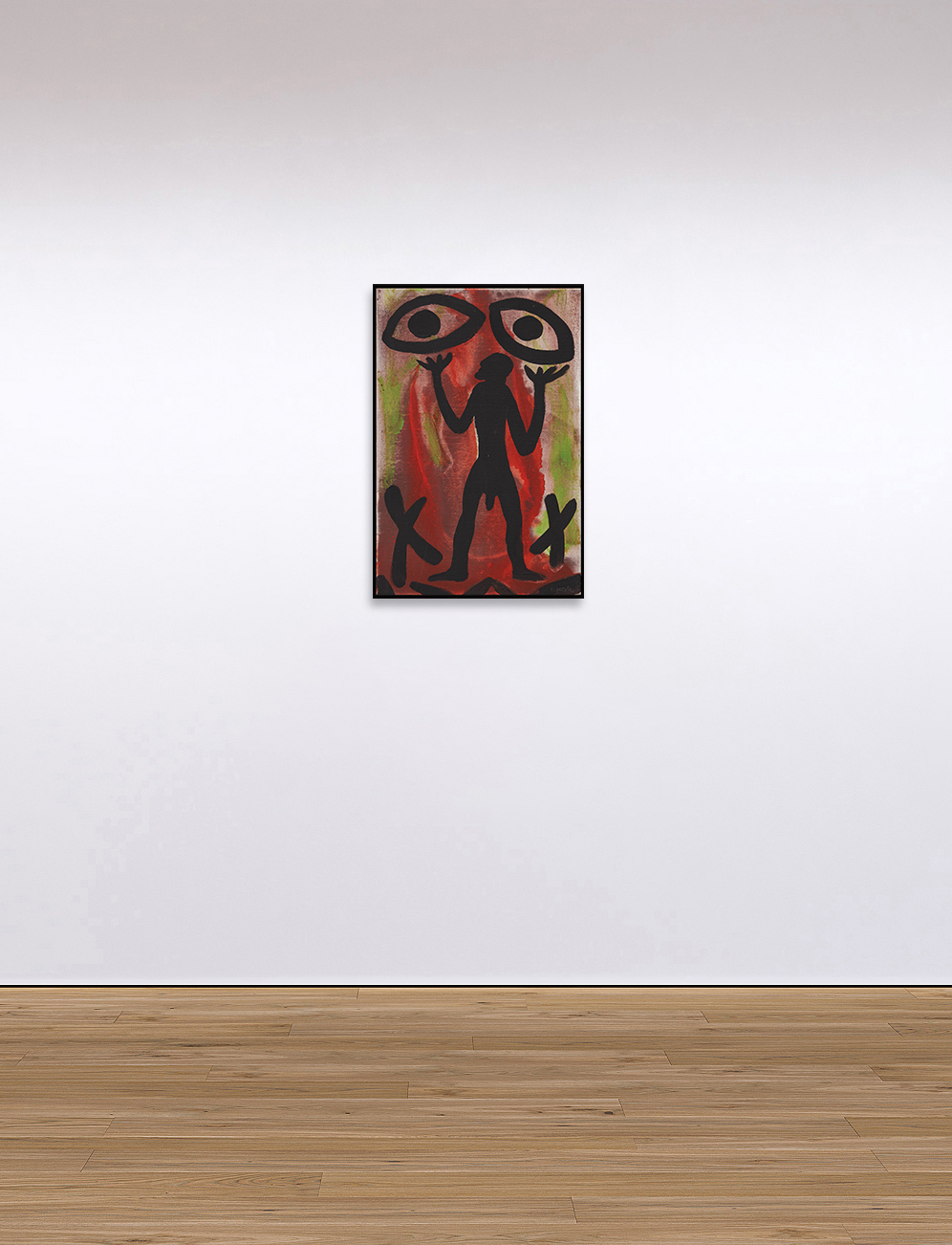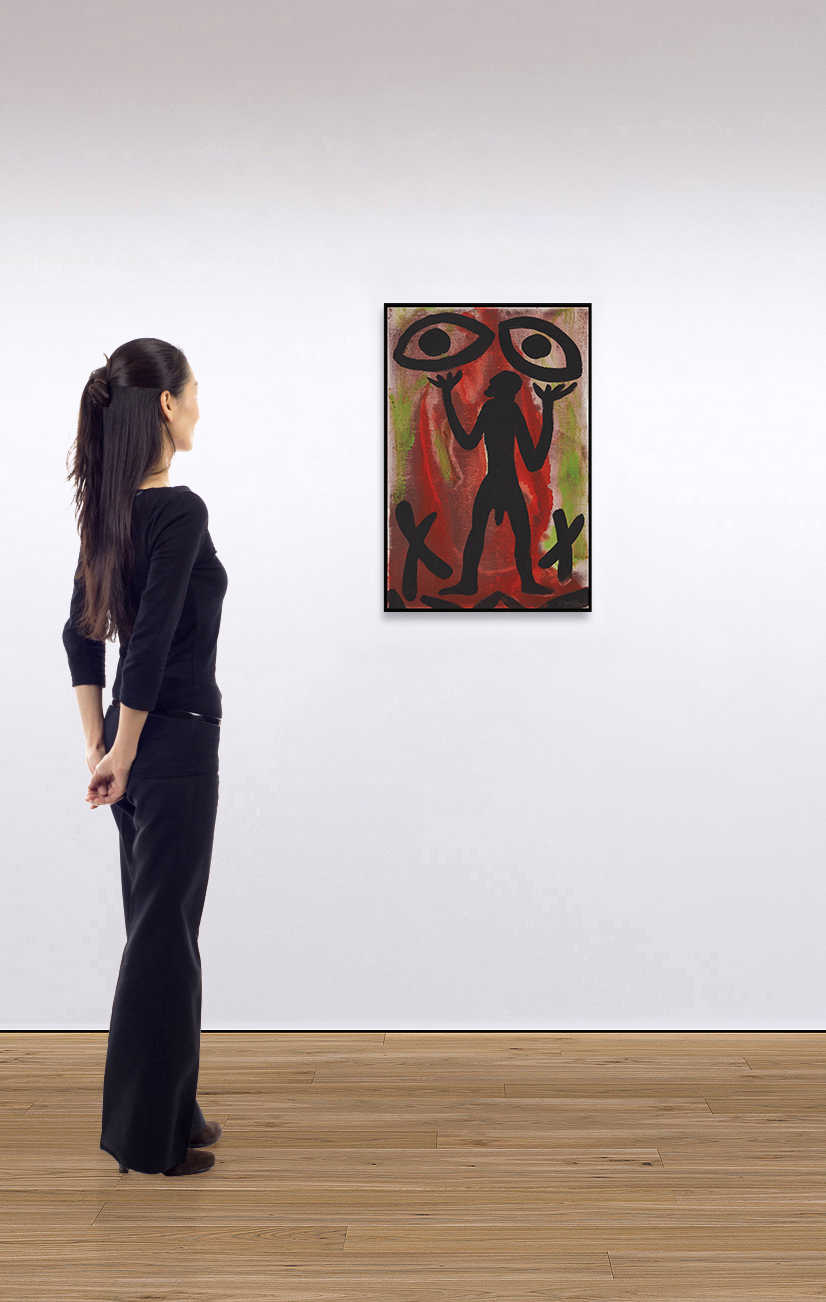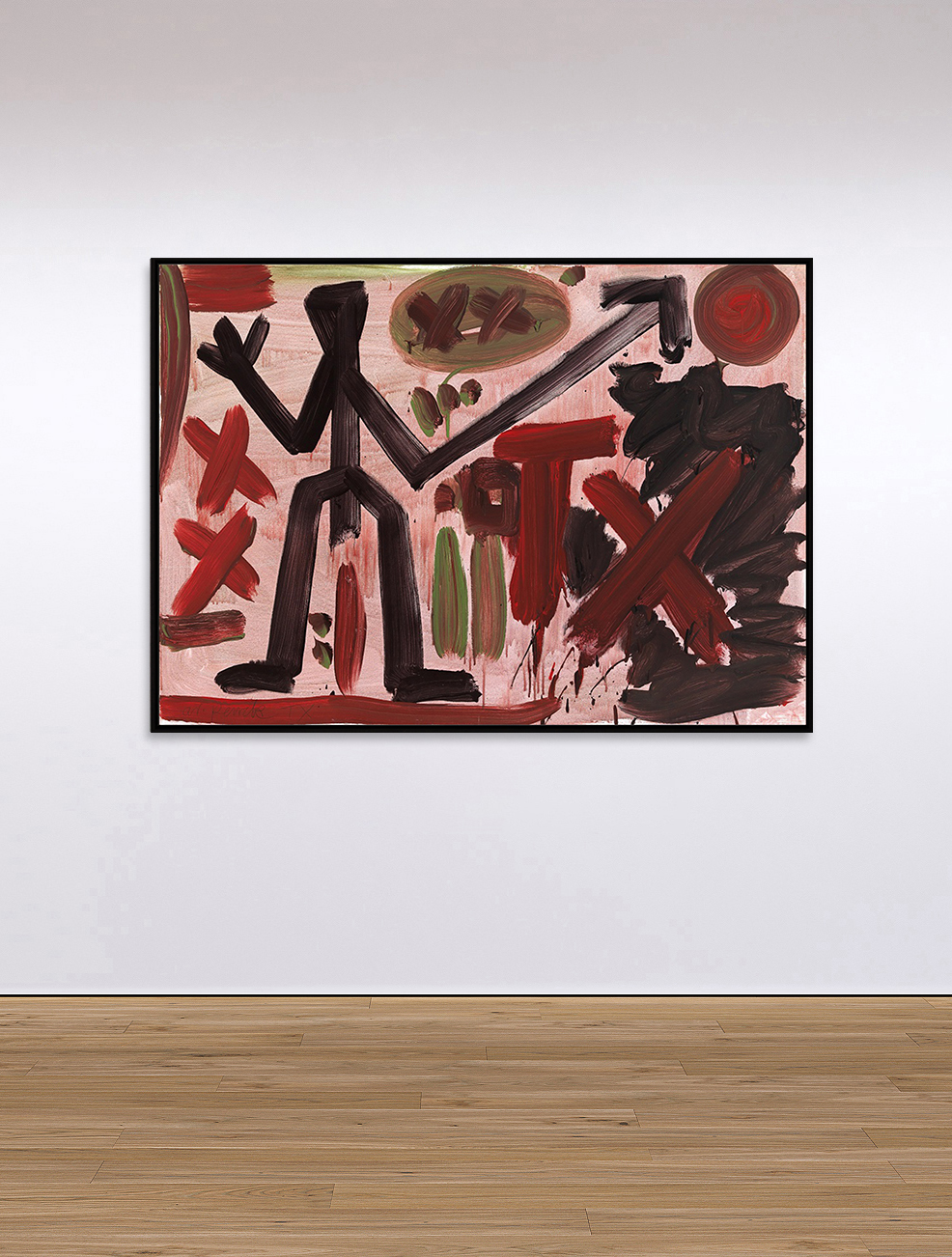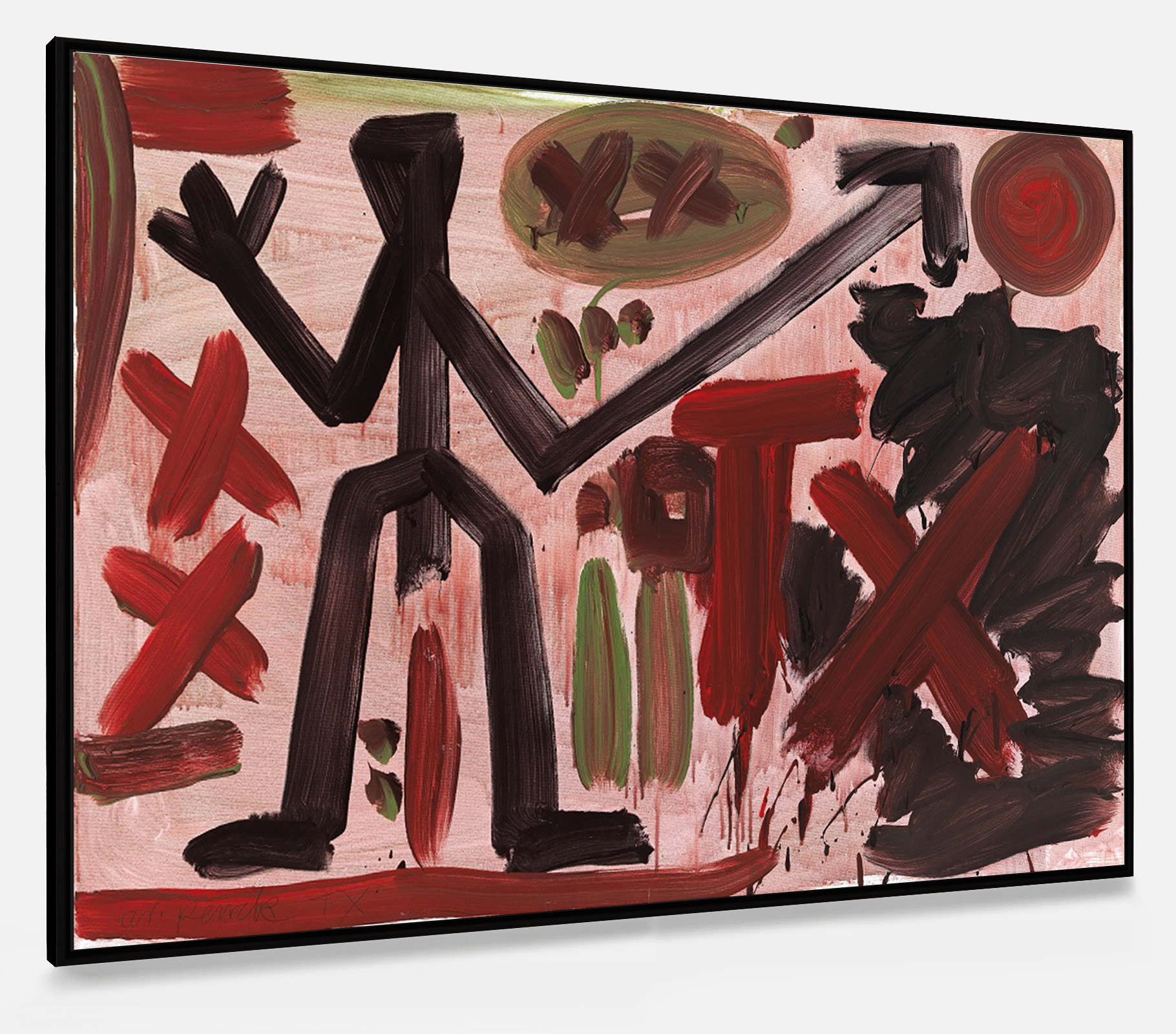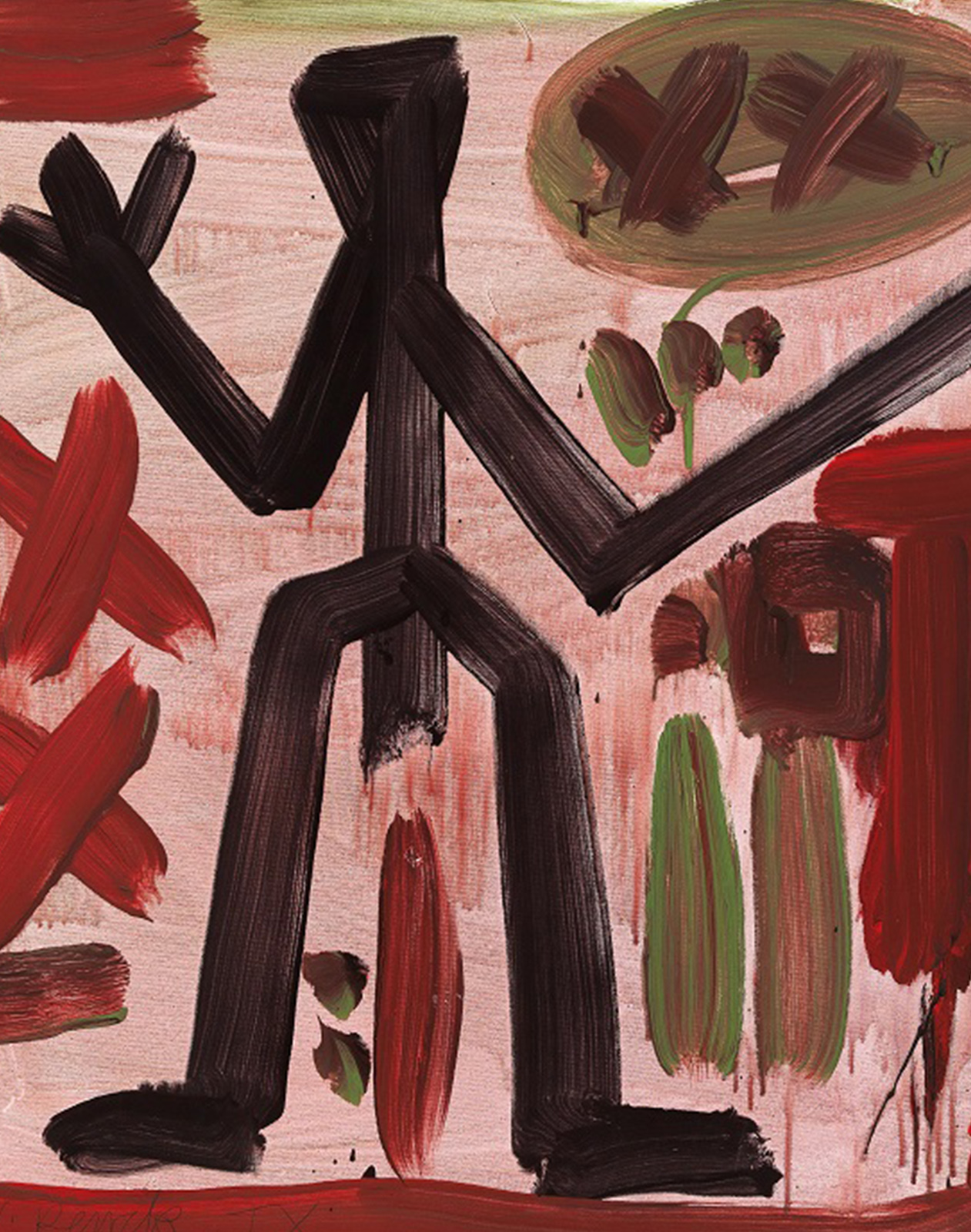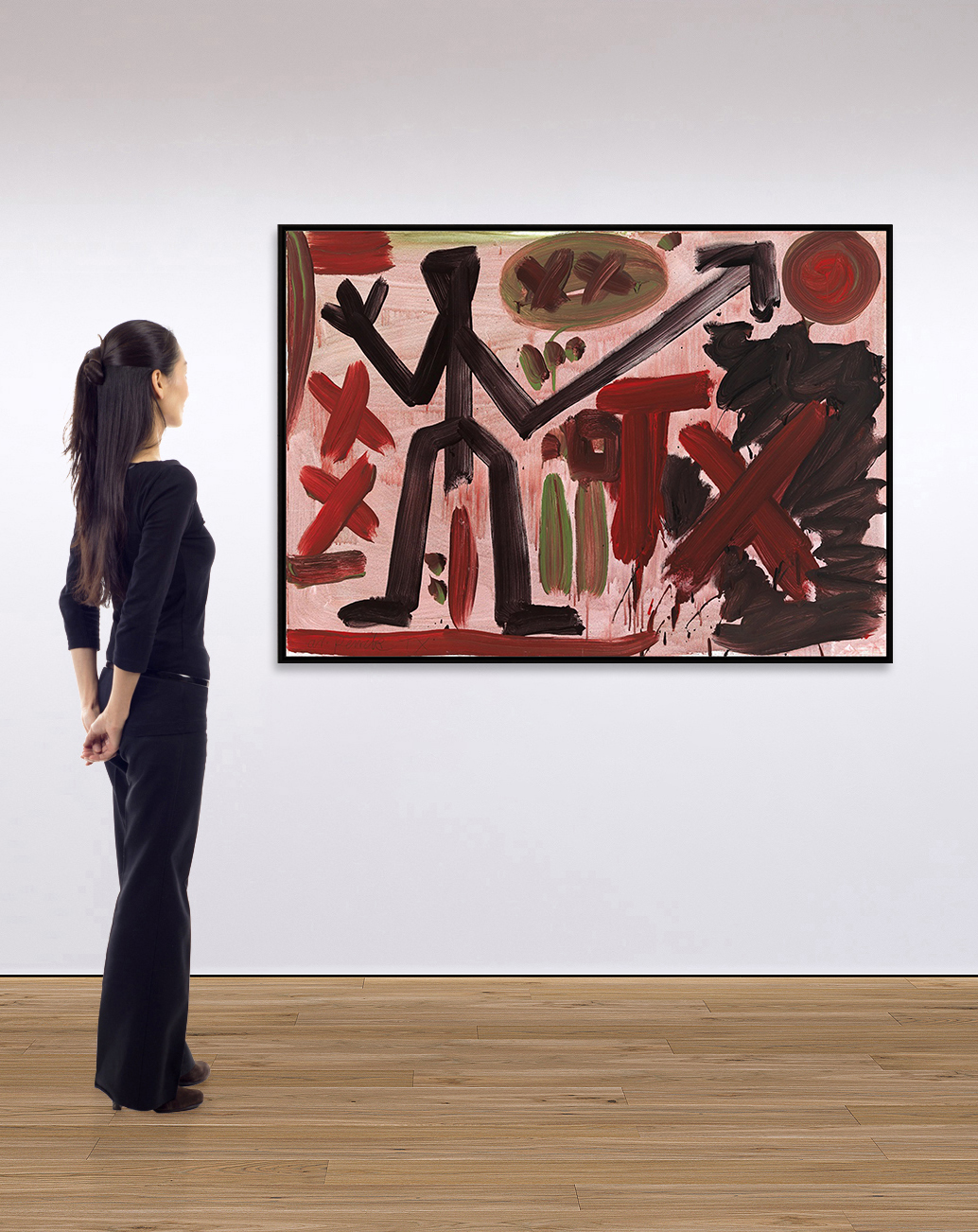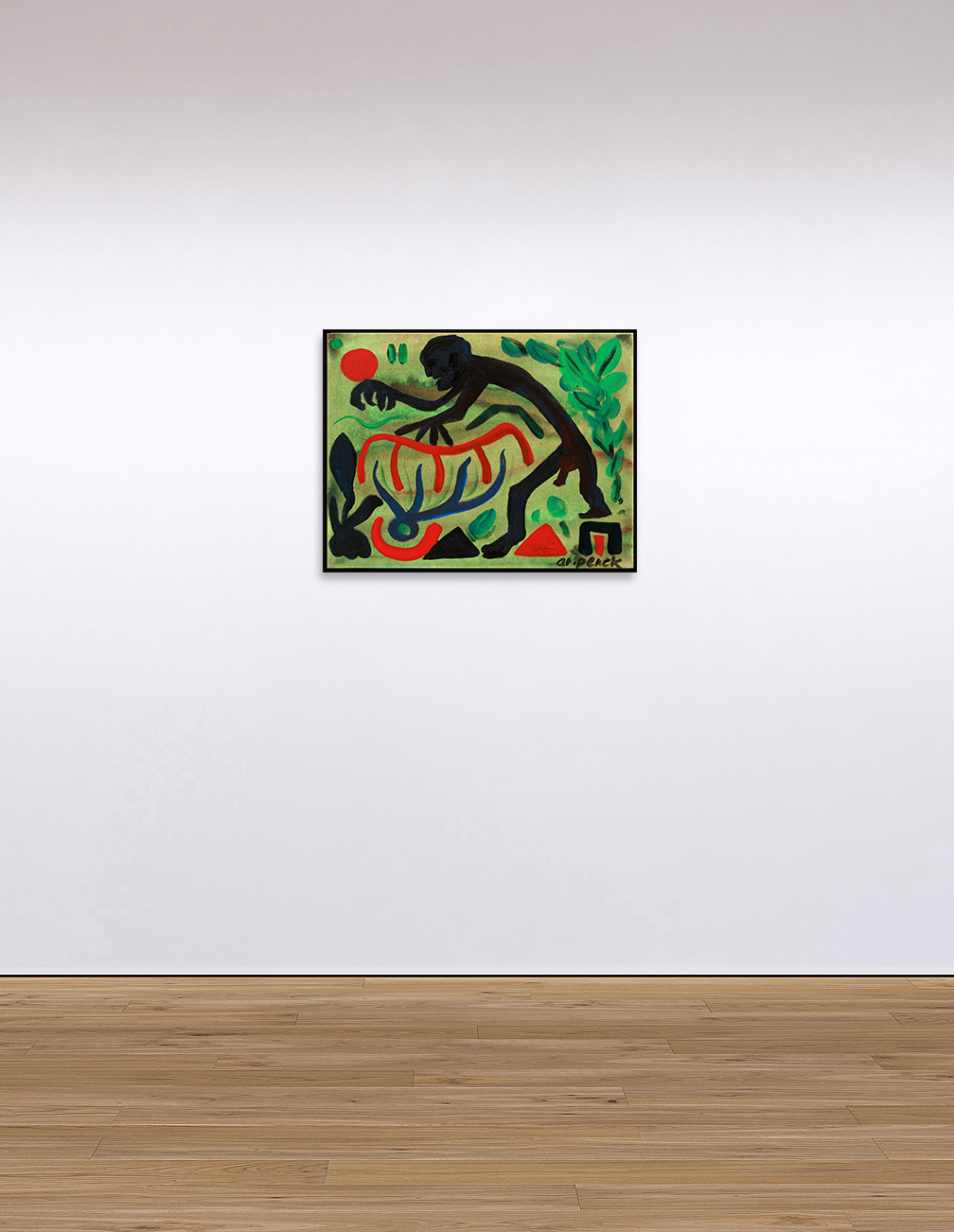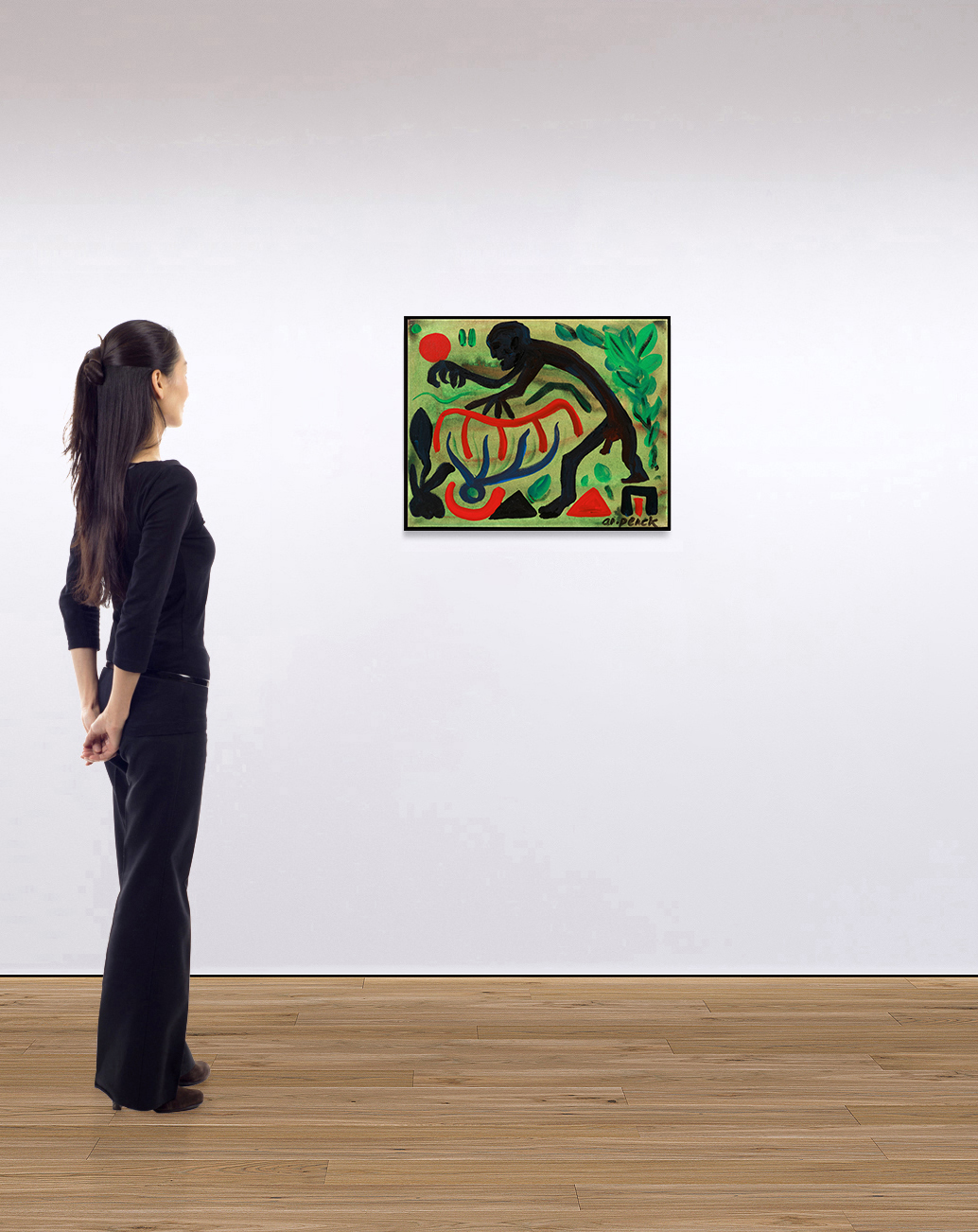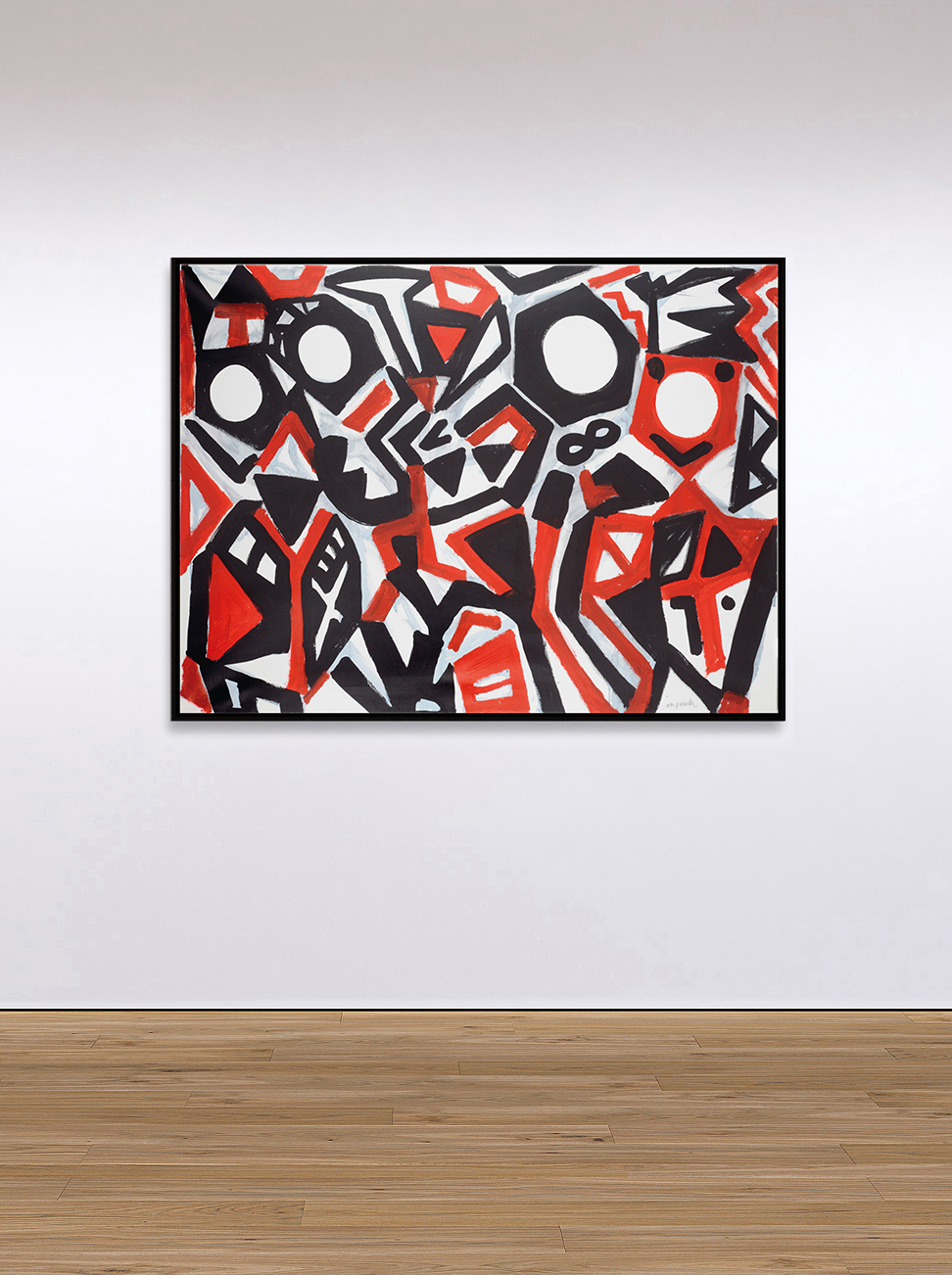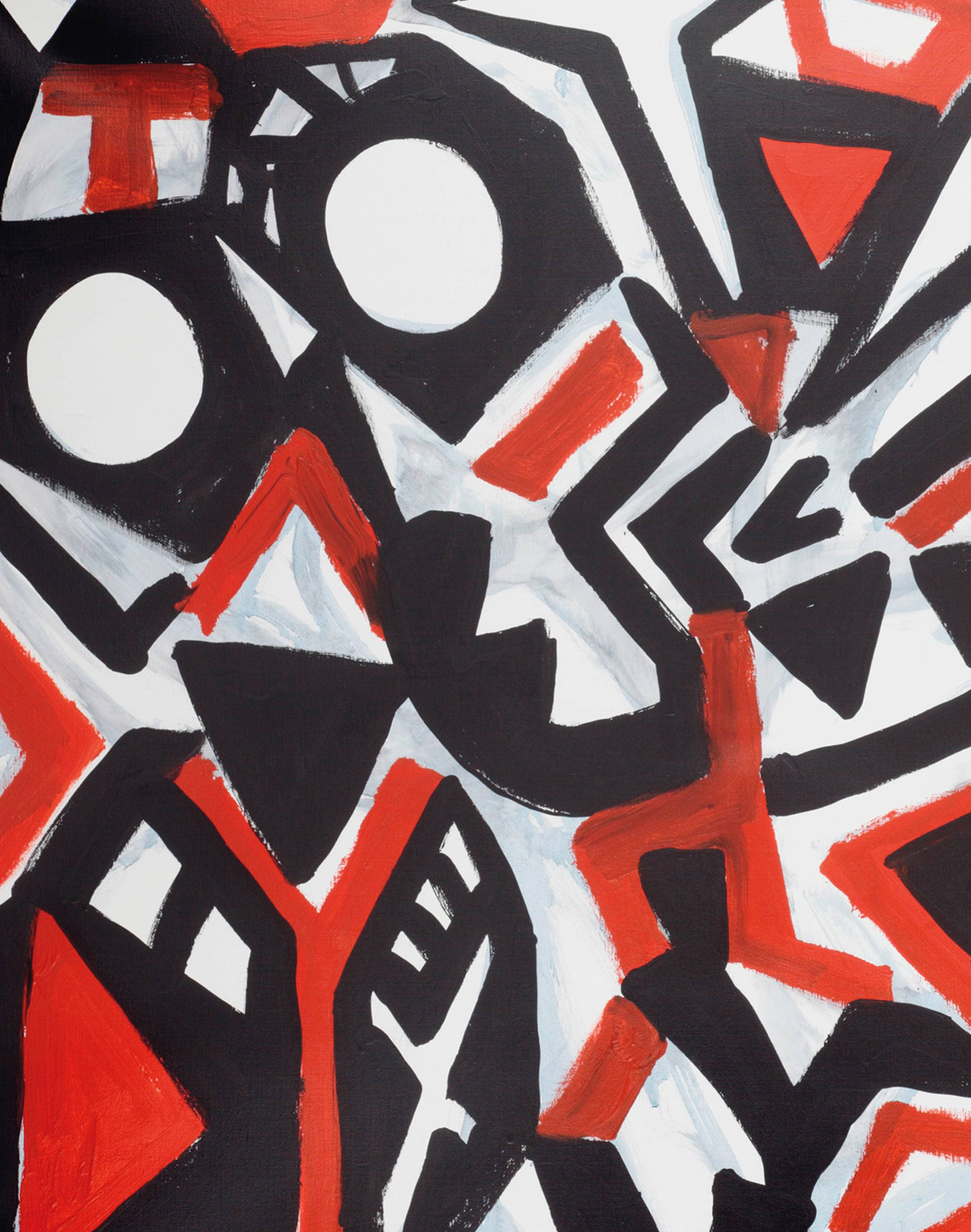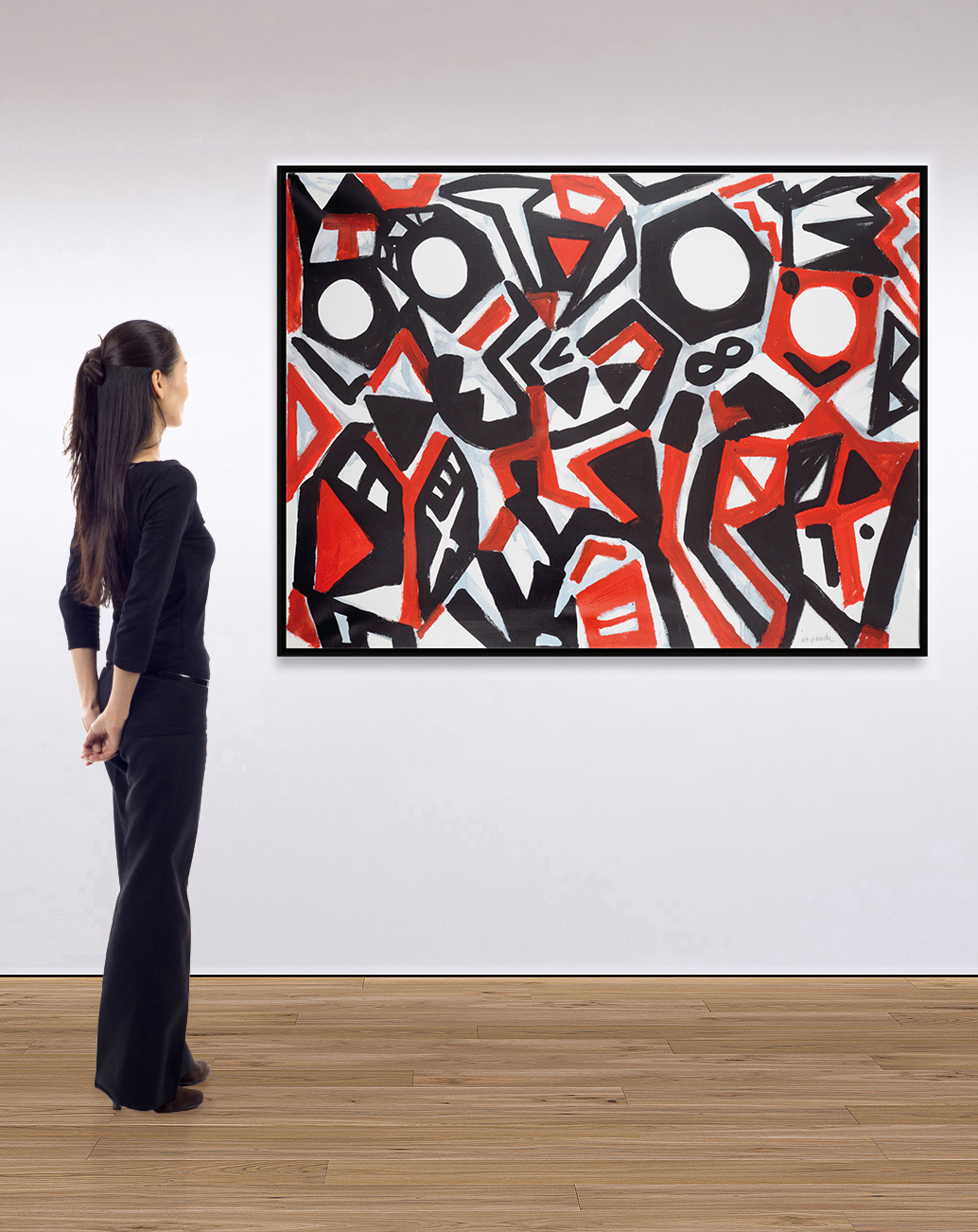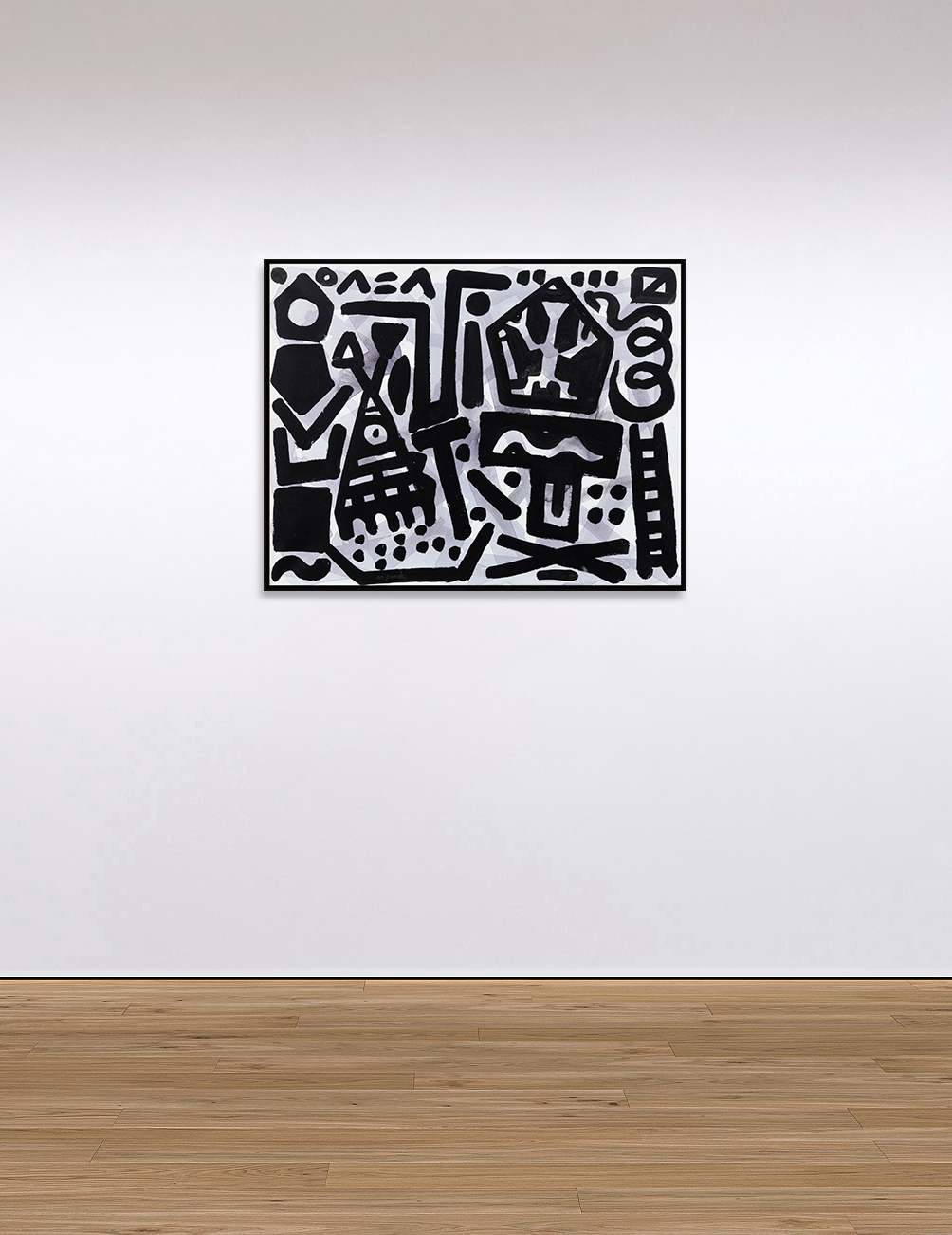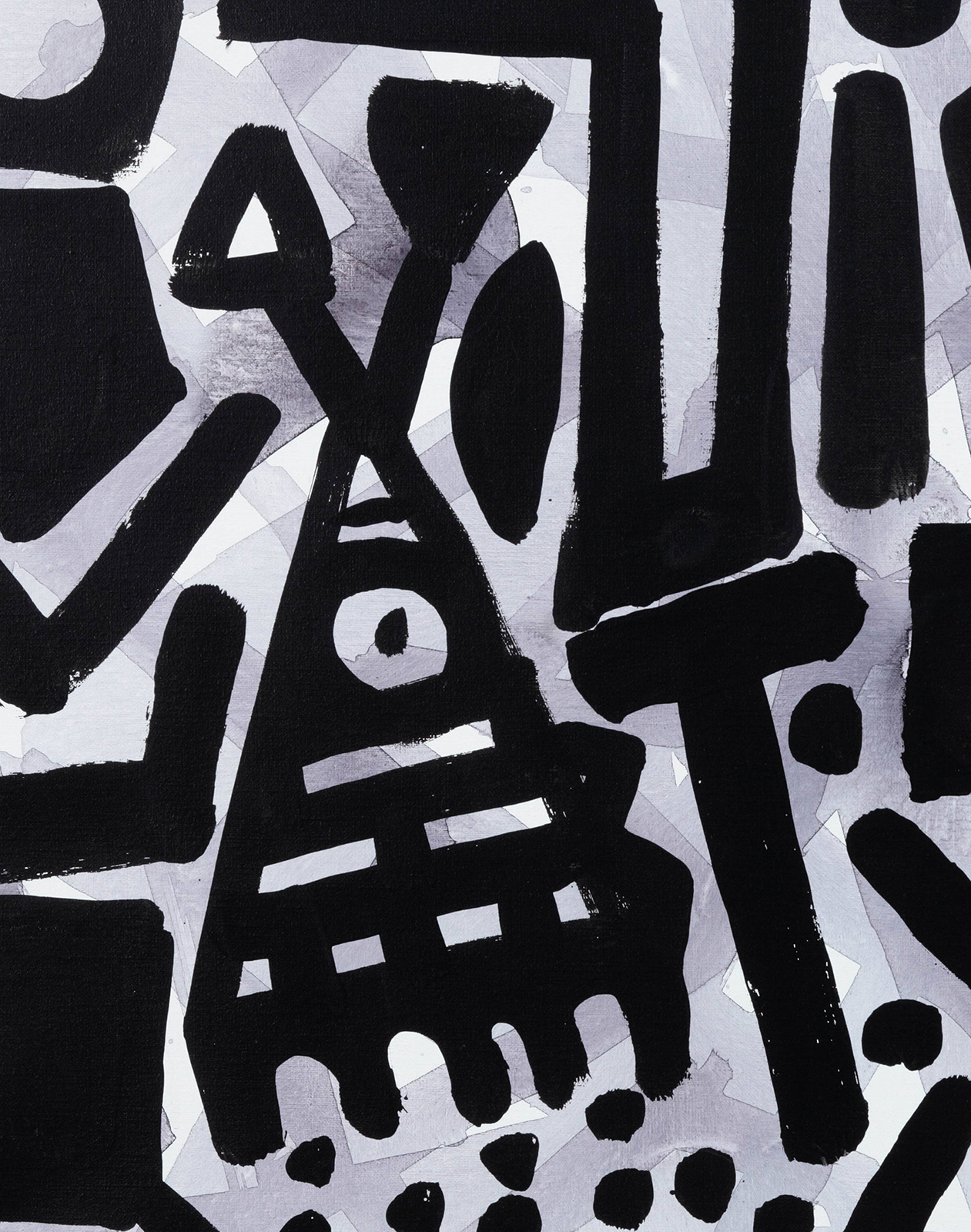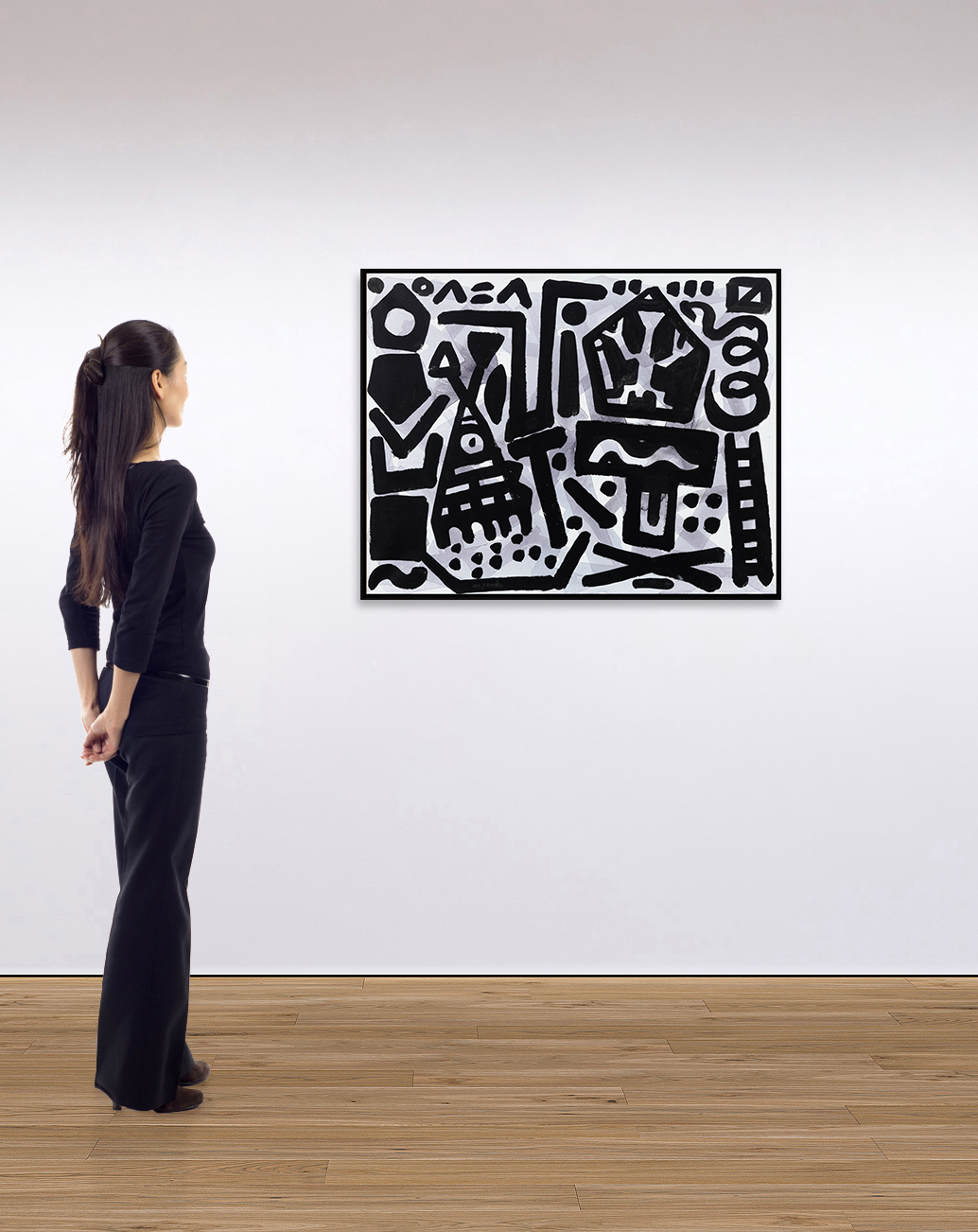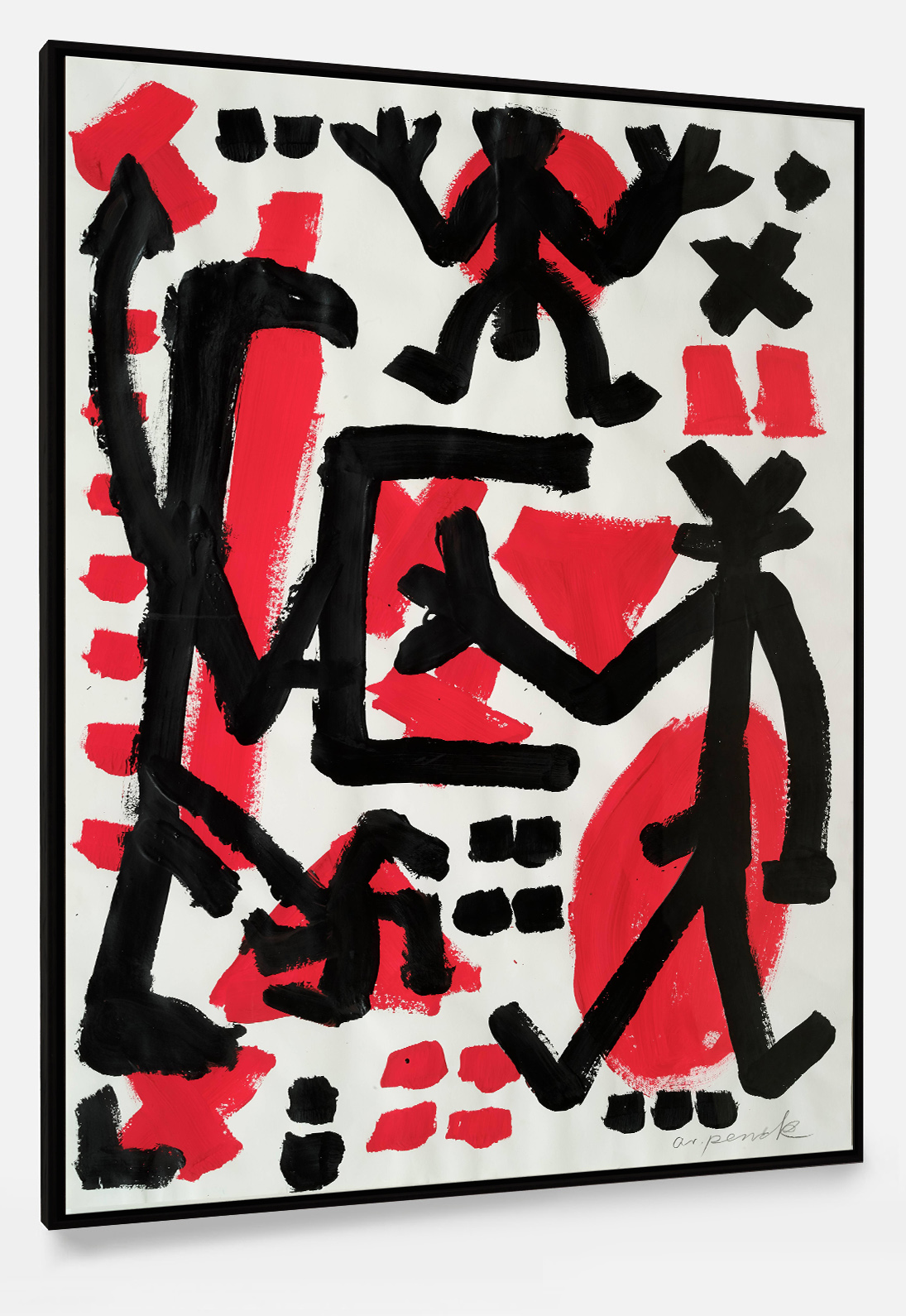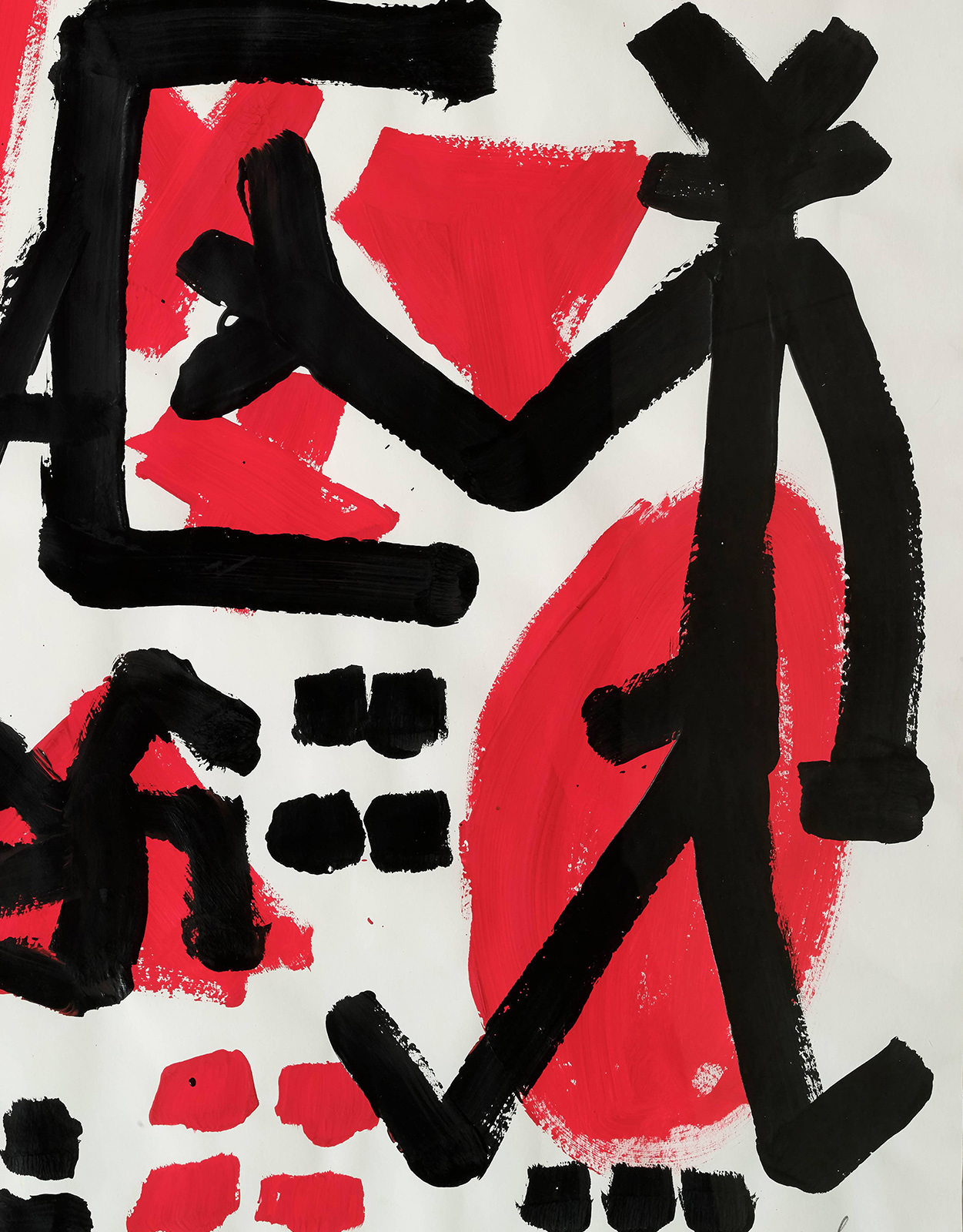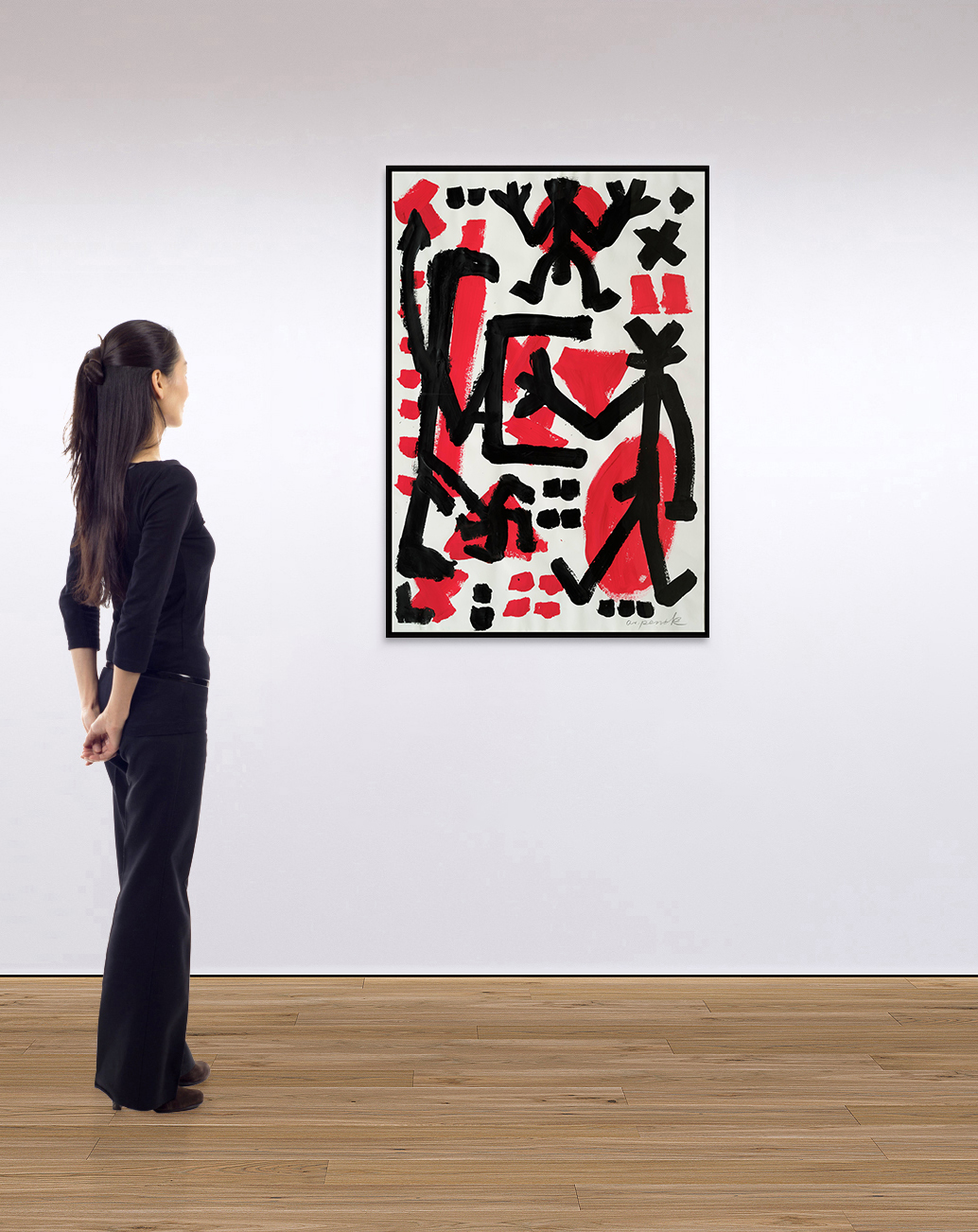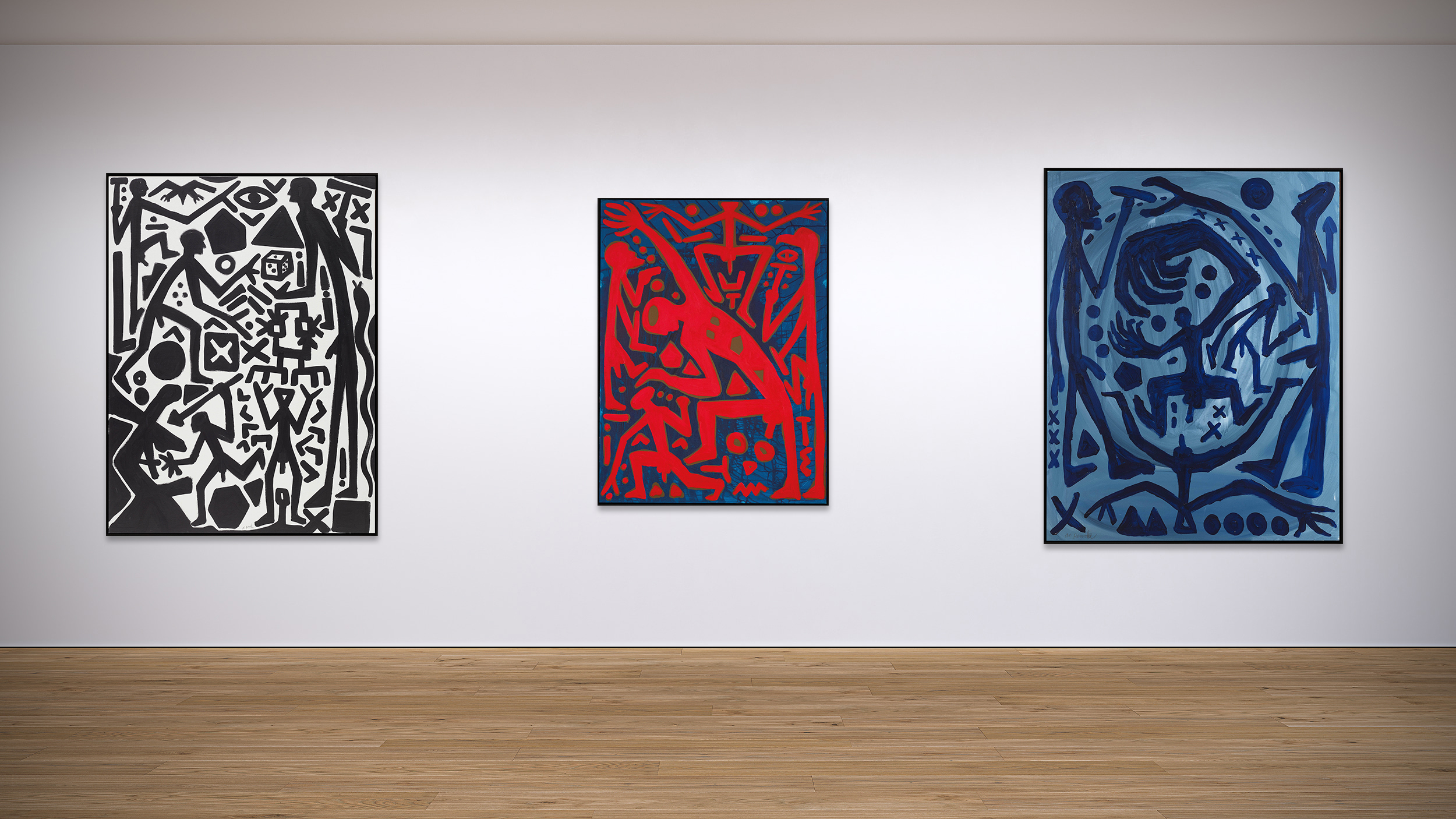
Viewing Room
A.R. Penck
New System Paintings
Considered a Neo-Expressionist, A.R.
Penck
(1939 – 2017) is best known for his paintings and sculptures characterized by simplified
figures and forms, and neo-primitive symbols and patterns. His interest lay in the
development of a pictorial language based on a simple system of signs, which would be
possible for everyone to decode. The result was a radical reduction in form to a series of
outlined stick figures, which he called “Standart”, in reference to the signals associated
with commonly known standard symbols. He achieved an abstraction of complex, socio-economic
situations in flat, pictorial compositions infused with symbolism. Penck was driven not by
any system or rational narrative, but by apparent chaos and emotion. In every drawing and
every painting he set out to create a purely visual space where the imagination can thrive
and viewers can lose themselves.
Characteristically simplified in form and ranging from small to large, five
anonymous figures traverse this work, with unruly vigour, identified by the work’s title “The
Rebellion of the Gamblers” . Surrounded by energetic black strokes carefully devised on a white
background, delineating familiar objects such as spears, hammers, an eye and a dice, these pulsating
characters exemplify the artist’s vibrant style, heavily informed by the aesthetic of hieroglyphs
and cave paintings.

AR Penck
The Rebellion of the Gamblers2001
oil on canvas, 160,3 x 120,2 cm (63.1 x 47.3 in)

AR Penck
Return to the Central System1996
acrylic on canvas, 120 x 90 cm (47.2 x 35.4 in)
One noticeable feature of Penck’s style of drawing and painting was the five
different types that emerged: an abstract style dominated by symbols, a figurative style in which
caricatured forms dominated, a purely automatic graphic style, an illusionist manner of working and
a destructive approach.
It is not always possible to say whether a particular motif or visual element
in Penck’s work is realistic, poetic, catastrophic or simply humorous.
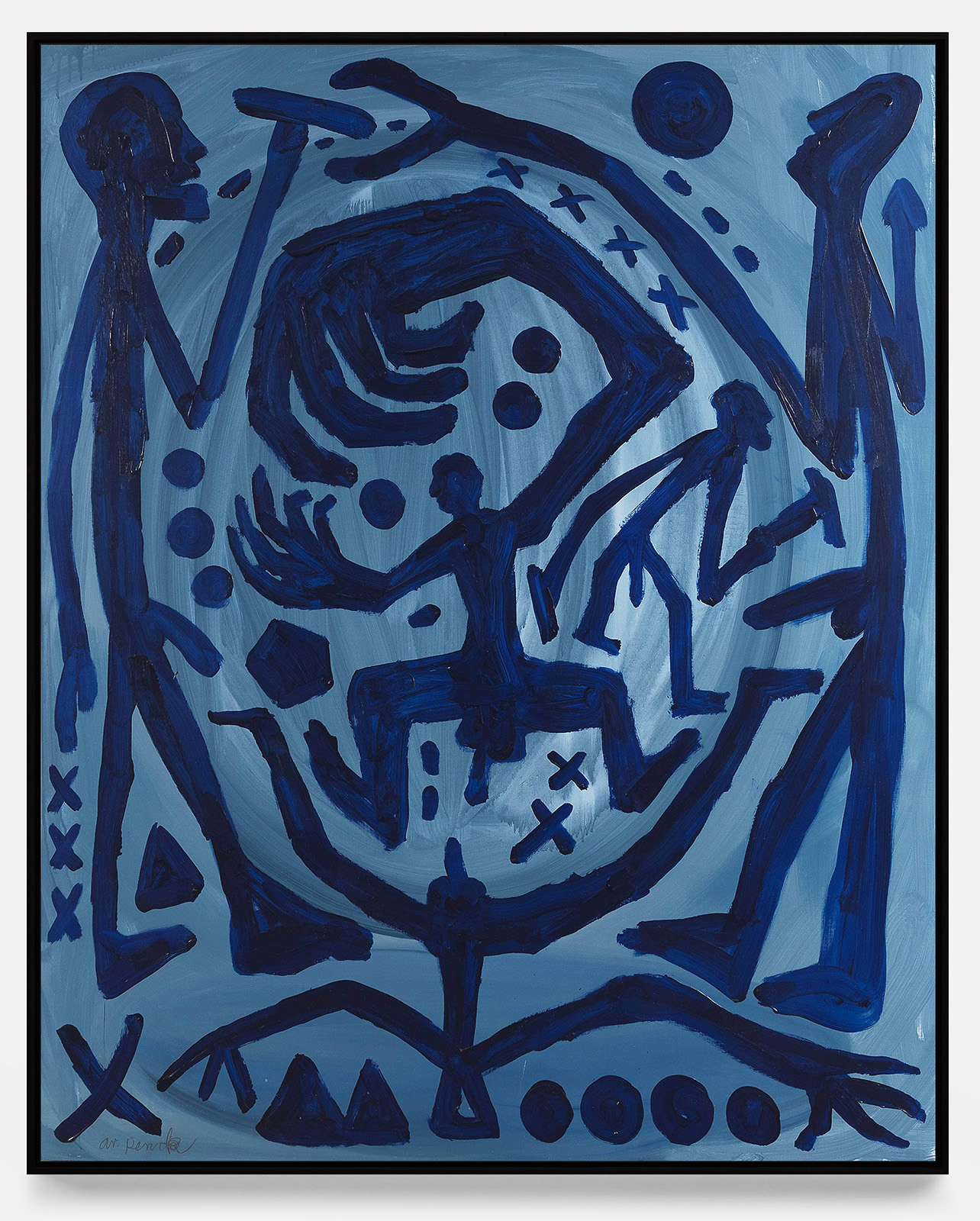
AR Penck
Untitled1994
oil on canvas, 160 x 130 cm (63 x 51.2 in)
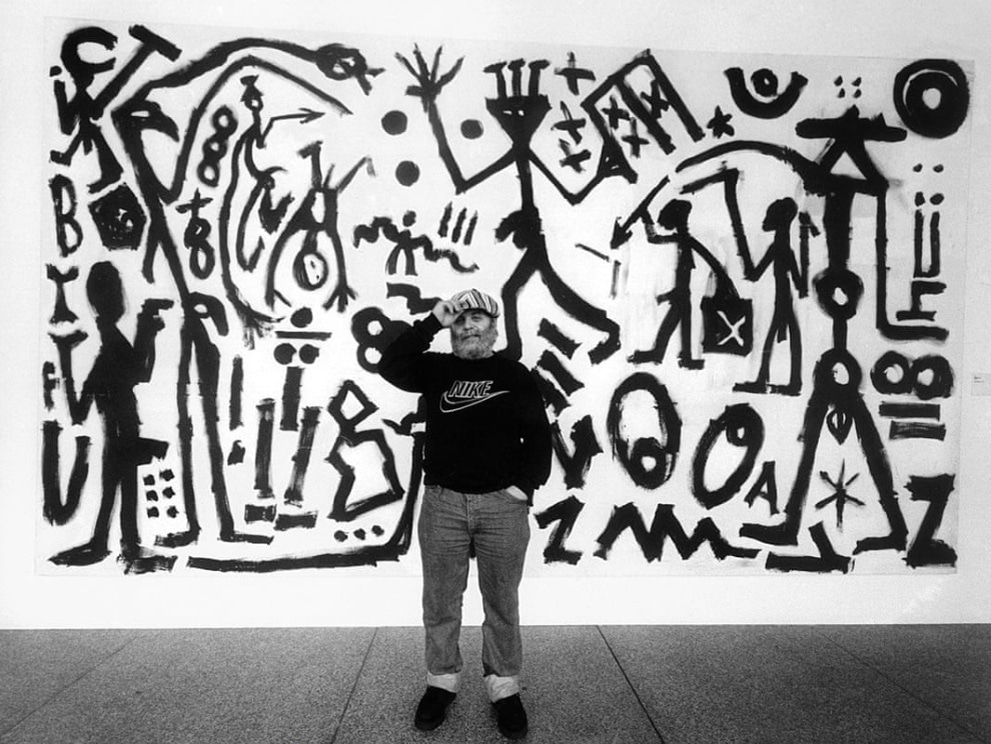
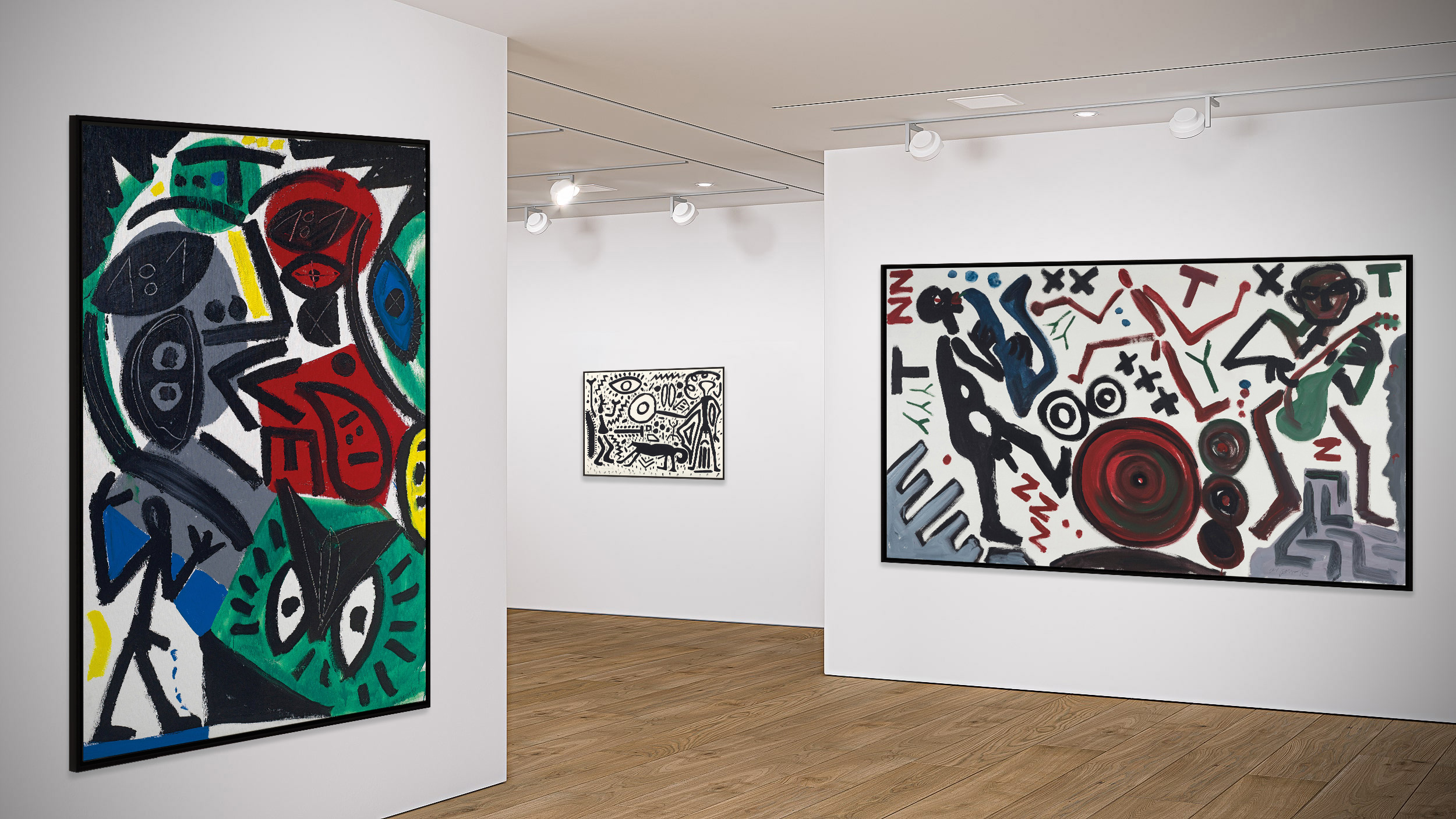
Installation view, A.R. Penck, New System
Paintings, Opera Gallery ©
Circles, chevrons and further eye-like shapes, some incised with thinner
designs, jostle in a forest of bold symbolic vigour, materialising into a human face in this
composition’s upper half. Replete with seemingly ancient mystery, the work’s impact is hieroglyphic,
cosmic, and immediate.
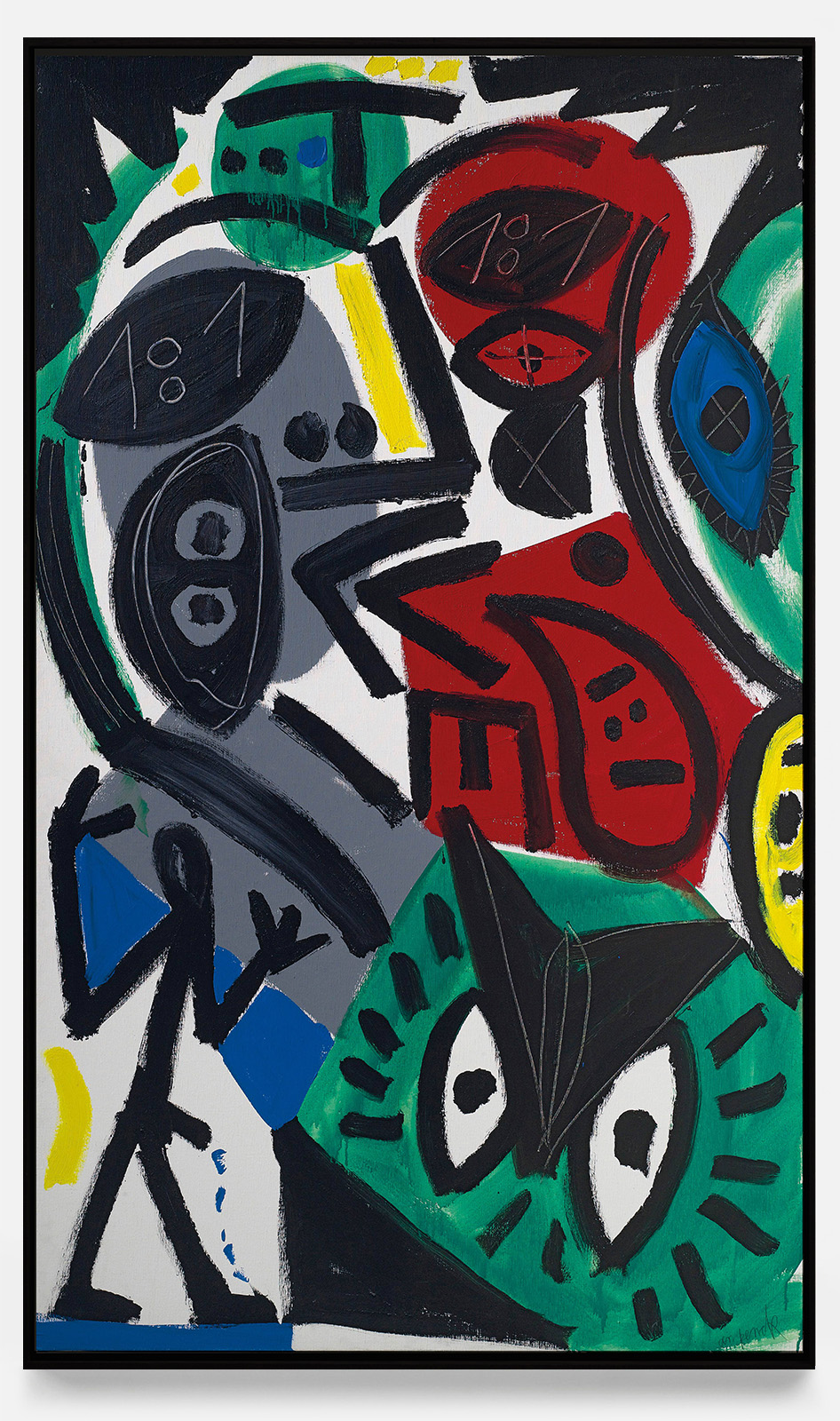
AR Penck
Untitled1990
acrylic on canvas, 199,5 x 119,5 cm (78.5 x 47 in)

AR Penck
Untitledacrylic on paper, 50 x 70 cm (19.7 x 27.6 in)
“Whoever sees my drawings will see very easily that there are about five different
types of images. But we can easily come up with many more, depending on how we characterize them.
The first type is the abstract image, which looks like a sign; the second is the figurative drawing;
the third, the destructive image. What mattered to me was to show that signs can hide behind other
signs, and that my way of thinking makes it possible to pass through this.”

AR Penck
The Musicians1988
acrylic on canvas, 120 x 200 cm (47.2 x 78.7 in)
Painted in 1988, The Musicians exemplifies the complex
world of symbols and systems that energised the art of A. R. Penck. With its thick, brazen strokes,
the work depicts a dynamic group of musicians, surrounded by graphic icons and geometric patterns
against an expanse of white. The subject is a testament to his love of jazz music; Penck himself was
a keen drummer and played in the band Triple Trip Touch in the late 1980s.

Installation view, A.R. Penck, New System
Paintings, Opera Gallery ©
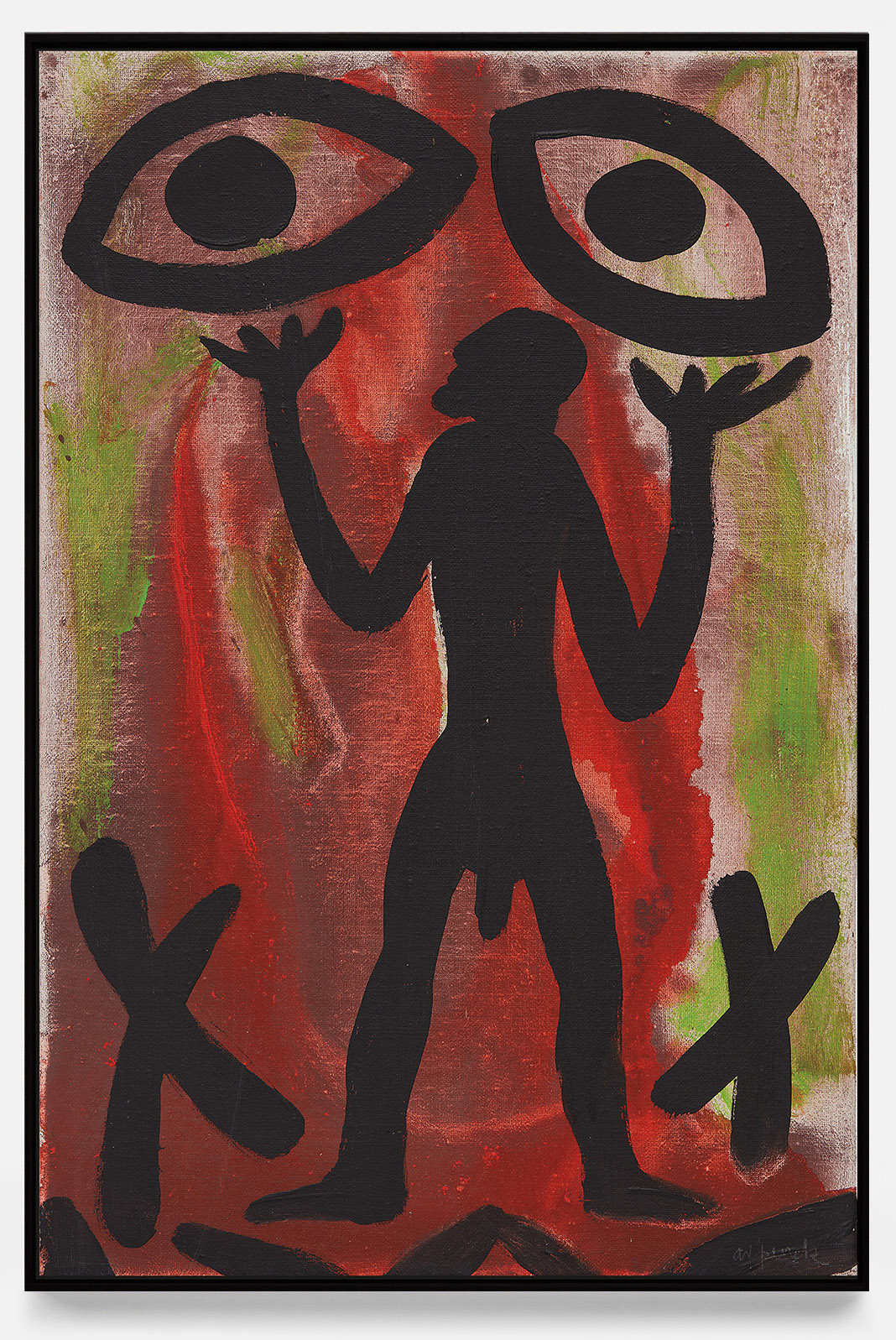
AR Penck
Feuer, Augen, Mann1997
acrylic on linen, 60 x 40,3 cm (23.6 x 15.9 in)
Penck’s forms are self-consciously “primitive,” reduced to a graphic
simplicity that allows a gestural and emotional immediacy.

AR Penck
Untitledacrylic on canvas, 100 x 140 cm (39.4 x 55.1 in)
Penck relied on a style that appeared childlike, even at times resembling cave
paintings and outsider art.

AR Penck
Untitled1994-1995
acrylic on canvas, 40 x 50 cm (19.7 x 15.7 in)
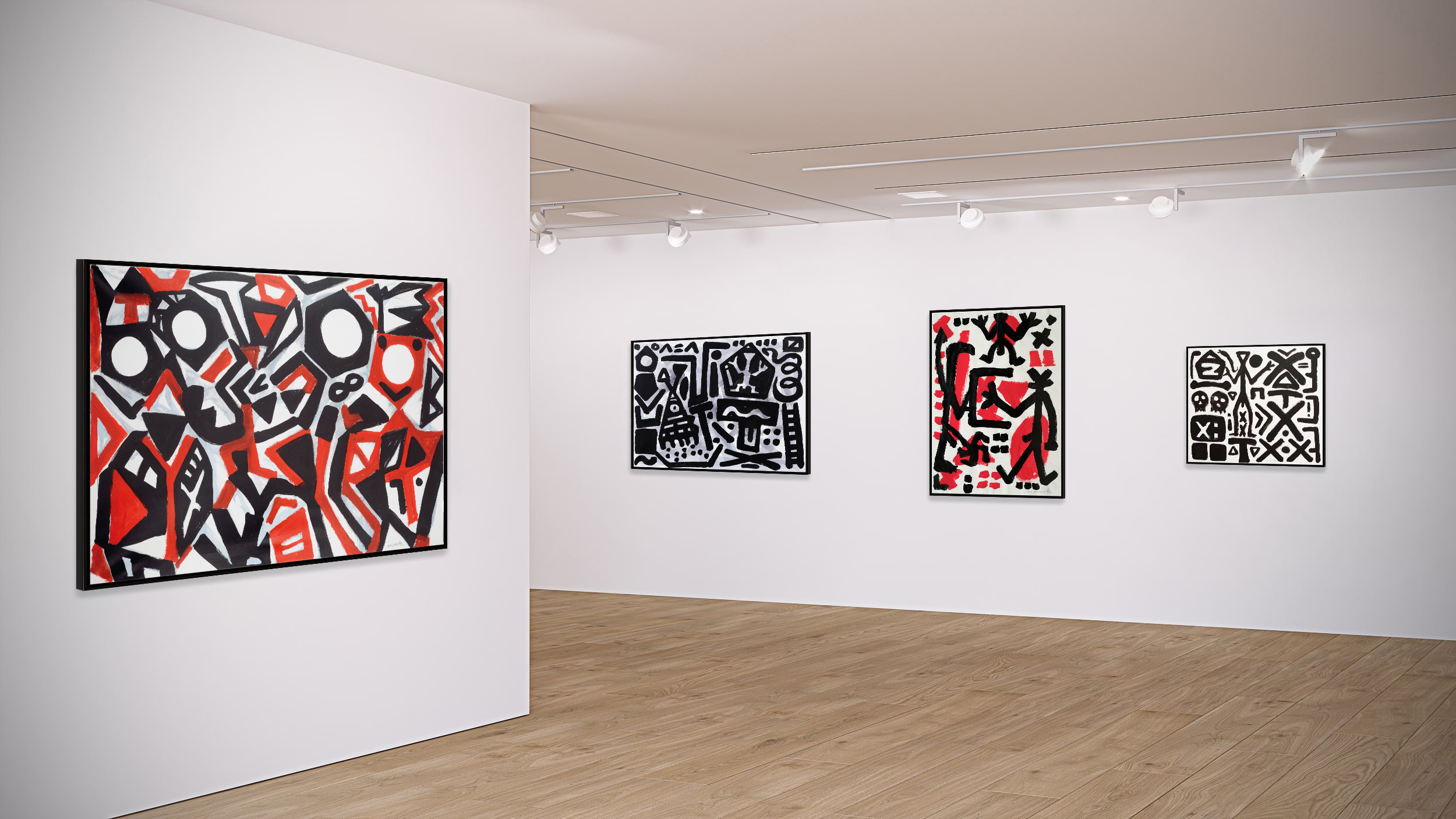
Installation view, A.R. Penck, New System
Paintings, Opera Gallery ©
Penck affirmed that there was an inherent connection between music and his
art. ‘Yes, in the rhythm because I am very interested in rhythm’, he said.
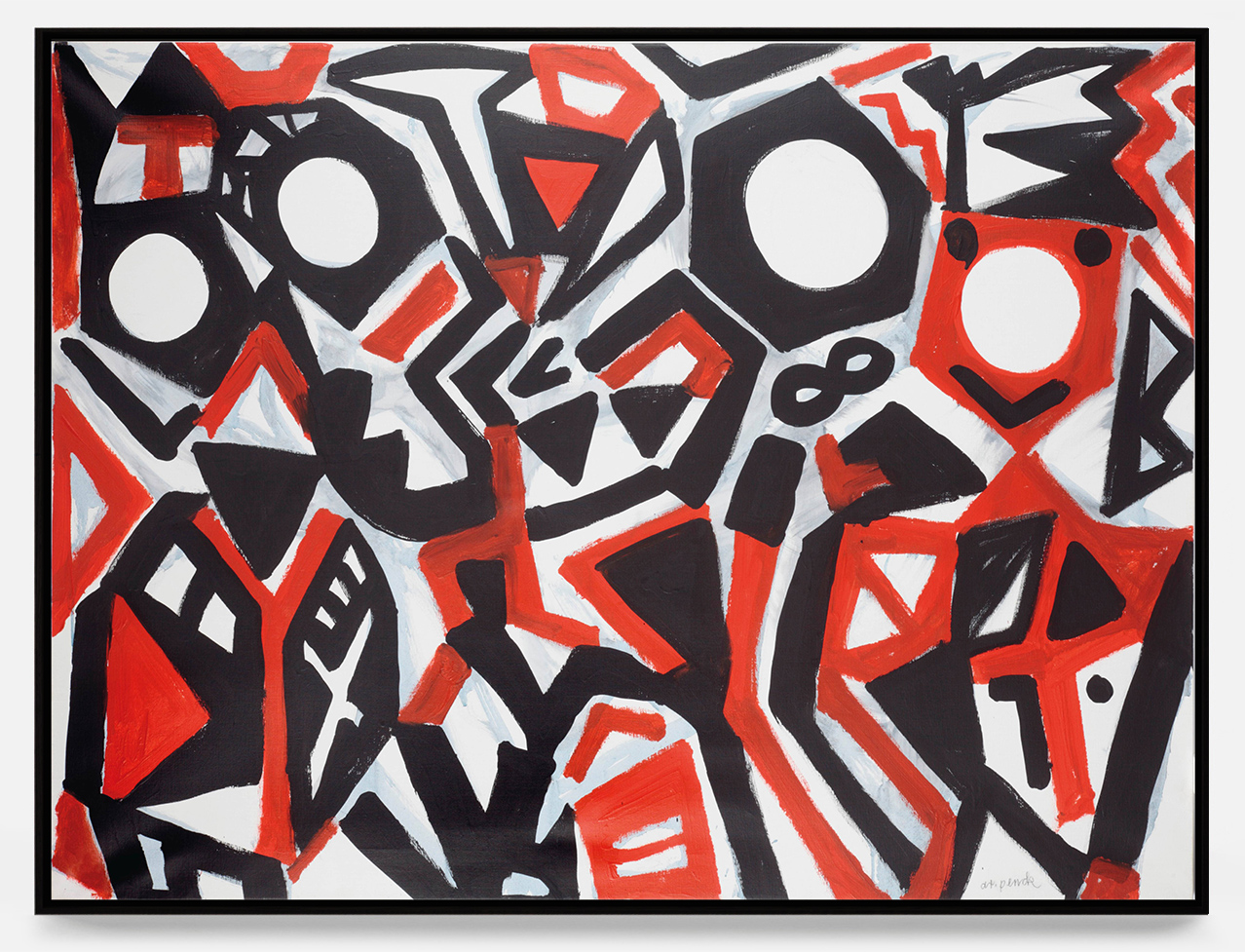
AR Penck
Extreme2007
oil on canvas, 120 x 160 cm (47.2 x 63 in)

AR Penck
Small Hierarchy2007
acrylic on canvas, 70 x 90 cm (27.6 x 35.4 in)
“Everything is paradox and schizophrenic, flat and magnificent, extremely
reactionary and very progressive, decadent and fascistic. And so am I! And so are you!”
Penck’s works are layered with meaning and messages, but at the same time
instantly legible.

AR Penck
Untitled1992
mixed media on paper, 100 x 70 cm (39.4 x 27.6 in)

AR Penck
Zwischen Feuer und Rauch2007
acrylic on canvas, 60 x 70 cm (23.6 x 27.6 in)
Born Ralf Winkler in 1939 in Dresden, Germany, the
artist adopted his pseudonym in 1968 after reading the work of the geologist Albrecht Penck. A.R.
Penck lived in East Germany until 1980 and unable to exhibit there publicly, he smuggled works out
to West Berlin and Switzerland where he was regularly exhibited. With his work becoming renowned for
its political and social commentary, Penck was viewed as a dissident artist in the East and as a
champion of free speech throughout the West.
The 1980s brought the artist global success; including his participation in the 1984 Venice Biennale as well as in Documenta 5, 6, 7 and 9. Numerous solo exhibitions worldwide include Kunsthalle Bern; Van Abbemuseum, Eindhoven; Museum Ludwig, Cologne; Gemeentemuseum, The Hague; The Irish Museum of Modern Art, Dublin; Museo Rufino Tamayo, Mexico City; Schirn Kunsthalle, Frankfurt; Musée d’Art Moderne de la Ville de Paris; Fondation Maeght, St. Paul, France; and Fosun Foundation, Shanghai, among many others. His works are held in the permanent collections of leading international institutions including the Museum of Modern Art, New York; the Tate Gallery, London; the Museum of Contemporary Art, Chicago, Neue Nationalgalerie SMPK, Berlin; and the Centre Pompidou, Paris. Upon emigrating to the West, A.R. Penck lived in London, Dublin and Dusseldorf. He died in Zurich, Switzerland in 2017.
The 1980s brought the artist global success; including his participation in the 1984 Venice Biennale as well as in Documenta 5, 6, 7 and 9. Numerous solo exhibitions worldwide include Kunsthalle Bern; Van Abbemuseum, Eindhoven; Museum Ludwig, Cologne; Gemeentemuseum, The Hague; The Irish Museum of Modern Art, Dublin; Museo Rufino Tamayo, Mexico City; Schirn Kunsthalle, Frankfurt; Musée d’Art Moderne de la Ville de Paris; Fondation Maeght, St. Paul, France; and Fosun Foundation, Shanghai, among many others. His works are held in the permanent collections of leading international institutions including the Museum of Modern Art, New York; the Tate Gallery, London; the Museum of Contemporary Art, Chicago, Neue Nationalgalerie SMPK, Berlin; and the Centre Pompidou, Paris. Upon emigrating to the West, A.R. Penck lived in London, Dublin and Dusseldorf. He died in Zurich, Switzerland in 2017.
